Thinking of Running?
Now’s a Good Time to Get Started
by Hilary Baum, Weavers Way
At-Large Board Director
Does “Local” Always Mean “Just”?
by Brigitte Schackerman, Field Assistant, Henry Got Crops Farm
Our New, Improved (Meaning Shorter!) Member Survey
by Kirsten Bernal, Weavers Way Membership Manager
October is a busy month at Weavers Way! With Fall for the Arts in Chestnut Hill, the Ambler Sampler and a whole lot of member appreciating to do, there’s a lot to look forward to. There’s also a wellness expo, a beer pop-up in Ambler and a tasty chili takeout event in Germantown.


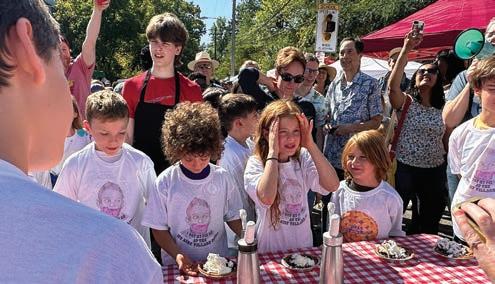
for the of
Is serving on the Weavers Way
Board of Directors in your future? Even though the annual election for the board takes place in April, it’s never too soon for you to think about becoming a candidate.
Between now and the end of February, any Co-op member in good standing who is at least 18 years old can apply to be on the 2024 ballot for a seat on the 11-member board. And fall is a great time for you to explore what the board does and how you might contribute your interests, experience and skills.
To start your exploration, please
When purchasing food at the Co-op or at any grocery store, what kind of labels and words draw you in? Words like “organic,” “sustainable,” and “local” often suggest well-managed, healthy farms.
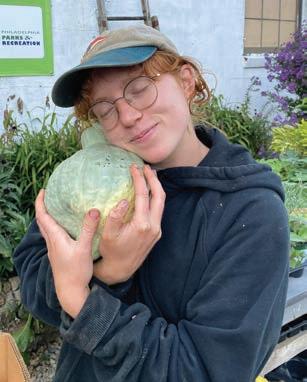
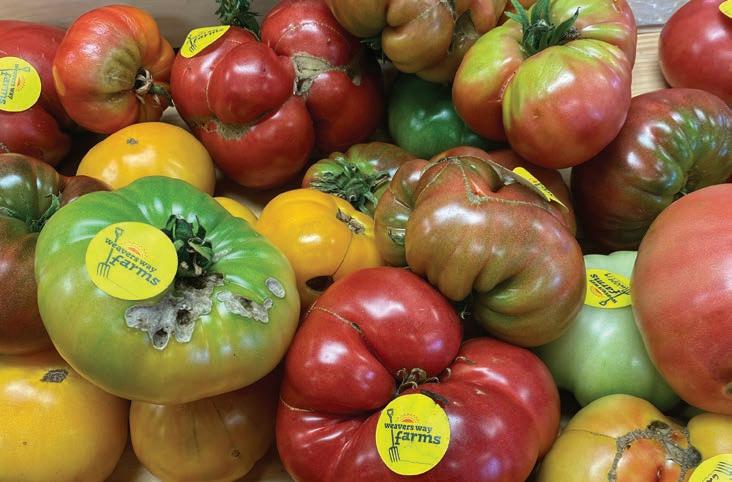
While our two Weavers Way Farms locations are not certified organic by the U.S. Department of Agriculture, customers who see our label on a bag of lettuce mix or a bunch of turnips know that they are supporting a farm that takes care of both its growing methods and its employees. In the supermarket, it is less easy to assume this from a brand name. There are no common food labels that give full transparency into the working conditions
of the people producing our food on an industrial scale.
Local food systems are defined as collaborative networks that integrate sustainable food production, processing, distribution, consumption and waste management in order to enhance the environmental, economic and social health of a particular area. In this sense, a true local food system should be following food production from seed to compost to soil to seed again. A truly sustainable food system works in a circular rather than linear fashion. As a result, food that is heavily commodified can never truly be just.
Many consumers latch on to the word “local” because it can be more community-
With such a full agenda, on behalf of the Membership Department, I’m asking you to add one more item to your to do list for this fall: the member satisfaction survey.
As we near the end of our 50th year, we turn to you, our members, and ask how we are doing. What is working and what can be improved? While our channels of communication are always open, the annual member survey is our opportunity to assess a broader view of Co-op operations and services and to present the results to the Board of Directors as a measure of our overall success.
This year, based on consistent feedback, we’ve worked to streamline the questions and shorten the survey. We have ensured that it is more mobile friendly, and we will provide more avenues to take the survey, including through social media posts and a QR code. Of course, you will also still be able to complete the survey with a link sent straight to your inbox.
Our larger goal in making the survey more accessible is to increase the diversity
Weavers Way Cooperative Association 559 Carpenter Lane, Philadelphia, PA 19119 www.weaversway.coop CHANGE SERVICE REQUESTED OCTOBER 2023 Since 1973 | The Newspaper of Weavers Way Co-op Vol. 51 | No. 8 The Shuttle (Continued on Page 5) (Continued on Page 19) (Continued on Page 3) Presorted Standard U.S. POSTAGE PAID Philadelphia, PA Permit No. 2658 Tailgating Edition! Raise your glass Beer Pop-Up Sunday, oct. 22 Noon - 4 pm Weavers Way Ambler Pop-Up Beer Garden Featuring Local Breweries Attic Brewing Co., Forest and Main Brewing Co., Tannery Run Brew Works & Widows Peak Distilling Co. Pump up your team spirit with libations from local breweries, live music, & game grub from Weavers Way!
photos by Mills Harasta, Marketing Coordinator
The Mt. Airy Village Fair returned to the intersection of Greene Street and Carpenter Lane on Oct. 1 for the first time since 2019 to help mark Weavers Way’s 50th anniversary. Kids gathered on a balmy Sunday to compete in the pie-eating contest (far left), groups including F2B Jawn performed dance and other routines (middle) and plenty of vendors were on hand as well.
photos by Jenna Swartz
Above, heirloom tomatoes from Weavers Way Farm; labels matter when buying fresh produce. Inset, Brigitte cradles a favorite gourd.
Editor’s Note
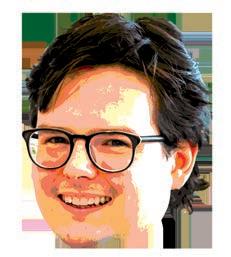
 by Karen Plourde, Editor, Weavers Way Shuttle
by Karen Plourde, Editor, Weavers Way Shuttle
I’m alWays eager to read the thoughts of our Farm Team members in the paper — all that fresh air and sunshine clears the synapses and sharpens insights. This month, Henry Got Crops field assistant Brigitte Shackerman weighs in on the idea of local produce and what that means when it comes to treatment of workers.
Brigitte, a South Jersey native, points out that the famous Jersey Fresh stickers on fruit and vegetables don’t say much about how the produce is grown. It doesn’t mean “organic” or “pesticide free,” and it certainly doesn’t always mean “we pay our migrant laborers a fair wage.” Although New Jersey has a high Adverse Wage Rate ($16.55 an hour), there are ways to get around it, and many farm owners do. Moreover, the undocumented status of many farm workers often means that they don’t have many avenues to protest their pay, living conditions or anything else.
By running, two farms of our own, we have a lot of say about the quality of our produce, how its grown and how we compensate our farmers. And we can check in with smaller farms like Sunny Harvest and Lancaster Farm Fresh about their growing and compensation methods. But the picture may be murkier when it comes to larger distributors like Four Seasons. It never hurts to do a little homework when considering what to buy and from whom.
Giving TWOsday
The Shuttle is published by Weavers Way Cooperative Association.
Statement of Policy
The purpose of the Shuttle is to provide information about co-ops, healthful food and other matters of interest to Weavers Way members as consumers and citizens. Weavers Way members are welcome to submit articles (about 500 words) and letters to the editor (200 words) on subjects of interest to the Co-op community.
No anonymous material will be published; all submissions must include an email or phone number for verification. The Shuttle retains the right to edit or refuse any article or letter. Submit to editor@weaversway.coop. Articles and letters express the views of the writers and not those of the Shuttle, the Co-op or its Board, unless identified as such.
Advertising
Advertising for each issue is due the 1st of the preceding month, e.g., Dec. 1 for January. Ad rates are online at www. weaversway.coop/shuttle, or call 215843-2350, ext. 314, or email advertising@ weaversway.coop. Advertised products or services may not be construed as endorsed by Weavers Way Co-op.
Check It Out!
by Karen Plourde, Editor, Weavers Way Shuttle
Fall Tastes Abound In Prep Foods Offerings
Although summer is truly gone, at least we have pumpkin, local apple and squash season to take away some of the sting. To celebrate the season, our Prepared Foods department now offers their Autumn Turkey
Apple Sandwich — Dietz & Watson turkey on a hoagie roll with curried mango mayo, local apple slices, sliced cheddar, arugula and red onion. It’s a big ol’ bite of fall and then some. Through the end of the month, it’s $1 off (regularly $8.99 each).
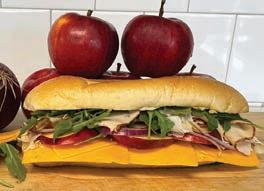
Autumn’s return also signals that soup season is back. For a lighter lunch or dinner option, grab a quart of Prep Foods’ gingered pumpkin soup. It has a chicken base and is spiced with turmeric, maple syrup, scallions, cumin and salt and pepper. Through Halloween, quarts are $2 off (regularly $9.99 each).
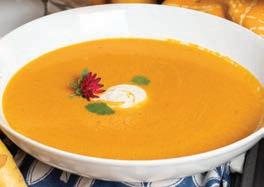
Whatever your taste preference, know that our soups are made with fresh ingredients and are packed with flavor. The selection and quality really can’t be beat. Lastly, our hummus offerings are on sale for $4.99 a pound all month (regularly $6.49). I’m a fan of the everything and cilantro lime varieties, but they all go well with whatever you want to dunk into them. Make them part of your football or bonfire snack lineup sometime this season.
5 YEARS
by Kieran McCourt, Weavers Way Ambler
Carved pumpkins and ornamental gourds start to decorate porches and front yards as Halloween approaches, but my kitchen counters and pantry shelves grow a collection of various winter squash. Let’s revisit another early "Slice It, Dice It" as sweet and nutty winter squashes come into season.
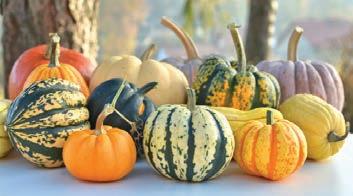
Yes, winter squash skin is edible, but that doesn’t mean that all squash skins are tasty. As a rule, smaller varietals like acorn, delicata, honeynut and even the skins of kabocha can be tender enough to eat. Other varieties, especially bigger ones, have rinds that are too tough and stringy when cooked and are best to peel. Or you can remove the sweet and tender flesh after cooking.
Most squash can be roasted, simmered or steamed with the skin on; the flesh will be far easier to remove from the outer rind. It’s important to decide whether your vegetable peeler is up to the task and whether clean cubes matter for what you’re doing. FYI, uncooked squash skins are a rare source of irritant contact dermatitis, so putting on a pair of gloves can help to avoid an adverse reaction.
A properly sharpened knife is key for hard winter squash prep. A dull knife will struggle to cut through a tough rind and can even roll off the hard skin, leaving the preparer open to injury. To cut most squash in half, remove a bit off the bottom and top ends to provide a flat surface. Then cut down the center to clean out the seeds inside.
Goat Rodeo Cheeses Satisfy a Range of Tastes
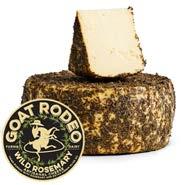
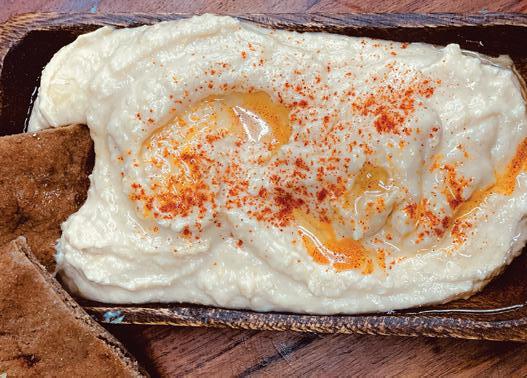
India Loevner, cofounder of Goat Rodeo Farm outside Pittsburgh, started milking her goats and making cheese in 2015. Since then, the farm has put together a variety of goat and mixed-milk cheeses that run the gamut from mild, spreadable chevre to herby Wild Rosemary to the beer-washed, mixed milk Bamboozle. That’s good news already, but this month, they’re on sale in time for fall snacking. The chevre, which would taste lovely when spread on a slice of pumpkin bread, is $3 off a pound (regularly $22.99). Bamboozle, which would complement sliced pears and/or apples, is also $3 off a pound (regularly $30.99), and the Wild Rosemary is $4 off a pound (regularly $28.99). Make room on your cheese platter for one or more of them this month.
Compostic Wraps and Bags
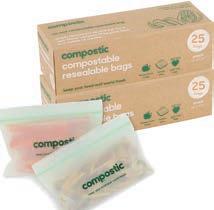
Speed Up Breakdown Times
Anyone who’s tried to lower the amount of plastic they use daily has learned that “compostable” is a loaded term. New Zealand’s Compostic seeks to do better. Their cling wrap and resealable bags are made of three biopolymers blended into a compound that contains no conventional plastic. According to their website, their products break down within 24 weeks in your home compost bin or 12 weeks in a commercial composting facility. That’s still a long time, but at least they actually go away.
Through Oct. 31, 150-foot and 250-foot rolls of Compostic cling wrap, 25-count packages of snack bags and 25-count packages of sandwich bags are 25% off (regularly $.49-$8.49 each). Pick up one or more varieties at the reduced price and see if they help cut down your plastic footprint.
Winter Squash Redux
Most squash can be cooked whole, but cutting them in half or in smaller sections can make it cook more quickly. A halved squash can be cooked cut side down on a baking sheet, which allows the sweet flesh to caramelize. Or the sections can be wrapped in foil and allowed to cook more gently from the trapped steam.
You can also simmer hard winter squashes in broth; cut the pieces into similar sizes and barely cover them with the cooking liquid. A drop lid or even an improvised one made of foil with small vent holes will keep the pieces from moving too much in the simmering liquid and breaking apart. This will also help prevent evaporation of the cooking liquid.
Winter squash can often be intimidating to cook at home. Some can be quite large, and they can be hard to peel, but all those varieties beyond butternut are worth exploring and can work as part of a well-planned or even unplanned meal. A slow morning or free afternoon on the weekend can be utilized to roast off a Red Kuri, Hubbard or other large squash that can then be added to various meals during the week. When cooked simply and flavored as needed, they can leave you with a versatile and delicious vegetable to use throughout the week.
2 THE SHUTTLE October 2023
Drop $2 (or more!) at any register to benefit Food Moxie programs
the word on wellness
Seasonal Immune Support: Natural Health Boosters
by Karen Palmer, Weavers Way Ambler Wellness Buyer
As the seasons change, so do the challenges our immune systems face. Whether it's the cold of winter or the allergies of spring, our bodies constantly adapt to new environmental factors and potential threats. At Weavers Way, we believe that a strong immune system is the foundation of good health. In this article, we'll explore what the immune system is and how you can strengthen it seasonally with supplements from our stores.
The immune system is your body's natural defense mechanism against infections and diseases. It's composed of various cells, tissues and proteins that work together to identify and neutralize harmful invaders like bacteria, viruses and toxins. A robust immune system is essential for overall well-being. It helps you stay healthy and recover more quickly when illness strikes.
Challenges Change with the Seasons
In winter, cold and flu viruses are more prevalent, while spring and fall can trigger allergies. Even summer can pose threats like sunburn and heat-related illnesses. To stay resilient, it's crucial to adapt your immune support strategies accordingly.
At the Co-op, we offer a wide range of supplements to help you bolster your immune system throughout the year. Here are some essential supplements to consider for each season:
Note: All the info below comes from the National Institutes of Health and annualreviews.org.
● Vitamin D: Especially vital during the darker months of winter when sunlight exposure is limited. Supports immune function and overall health.
● Vitamin C: Known for its immuneboosting properties, vitamin C helps ward off colds and flus. It's an excellent choice for winter and beyond.
● Probiotics: Gut health is closely linked to immune (and mental) health. Probiotic supplements can help maintain a balanced gut microbiome and enhance your body's immune response.
● Quercetin: A natural antihistamine found in foods like onions and apples, quercetin can be beneficial for combating allergies during the spring and fall. In an Oct. 2020 study in PubMed, it was found to play a role in Coronavirus replication. Quercetin can stabilize the cells that release histamine in the body and thereby have an antiinflammatory and antihistamine effect.
● Zinc: This mineral is essential to help your immune system and metabolism function. It is important for wound healing and for your sense of taste and smell.
● Elderberry: Known immune booster and particularly useful during cold and flu season. It has been shown to reduce recovery time.
● Omega-3 Fatty Acids: These healthy fats found in fish oil can help reduce inflammation and support overall immune health.
Before starting any new supplement regimen, it's essential to consult with your physician. Remember that supplements are most effective when combined with a balanced diet, regular exercise and good sleep hygiene.
Your immune system is your body's first line of defense against illness, and supporting it seasonally with supplements can help you stay healthy yearround. Strengthening your immune system is an investment in your long-term health, and we're here to support you every step of the way.
Each member participant will be entered into a raffle of gift cards and local products!
Scan the QR Code, or watch your email for a link.

The survey takes about five minutes.
The Board uses the data that’s collected to ensure we are meeting our Ends. Broad participation among members is vital to the Co-op.
Our New, Improved (Meaning Shorter!) Member Survey
of respondents. This year, we will measure success by reaching a wider crosssection of our more than 11,000 member households. Each member participant will be entered into a raffle to win gift cards and local product gift baskets.
The Co-op exists to serve the needs of our members and our communities,
ABOUT THE CO-OP
Fifty Years of Working Member Hours Sure Adds Up
Have you wondered how many hours our working members have put in over the last 50 years? A lot!
Based on our digital records that go back to 2008, we can say that they worked 250,000 hours from then until now. And if we were to hazard a guess based on the total number of years that Weavers Way has been in existence, we would be close to 750,000 hours worked!
The Co-op has evolved with the years, and the criteria for working membership has changed with the times. We went from requiring all members to be working members to making it a choice. A member could decide whether their household would be made up of working members or be invested in the Co-op but opt out of the working member program.
We also went from organizing shifts at only the Coop’s stores to collaborating with many community organizations and partners. As a result, we are now able to offer members a bevy of ways to fulfill their annual hours.
Many of our members worked at the Mt. Airy Village Fair on Oct. 1 and helped recreate this magical experience. Have you thought about how you will work your hours this cycle? Check out our Member Center (members.weaversway.coop) — we’re sure you will be inspired by the various opportunities listed online.
—Nima Koliwad, Weavers Way Community Programs coordinator
(Continued from Page 1)
and the member satisfaction survey is our opportunity to speak up and have our voices heard. So, beginning Oct. 12, we are asking as many members as possible to set aside five minutes to let us know how well we are serving your needs and meeting our Ends. We’re looking forward to hearing from you!
As part of our celebration of Weavers Way's 50th anniversary, we'll include a lesser-known tidbit about the Co-op's history in every issue of the Shuttle this year. If you know, you know — if not, that's ok, too!
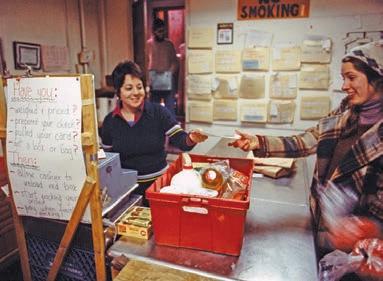
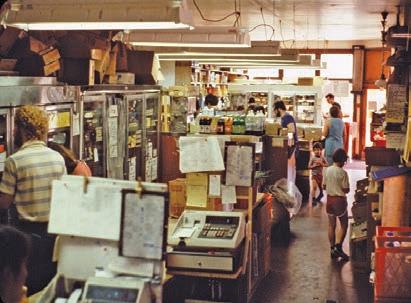
October 2023 THE SHUTTLE 3
SATISFACTION SURVEY - OCT. 12-27
MEMBER
Meet Merisa MacDonald, Food Moxie’s Growing Space Manager and Educator
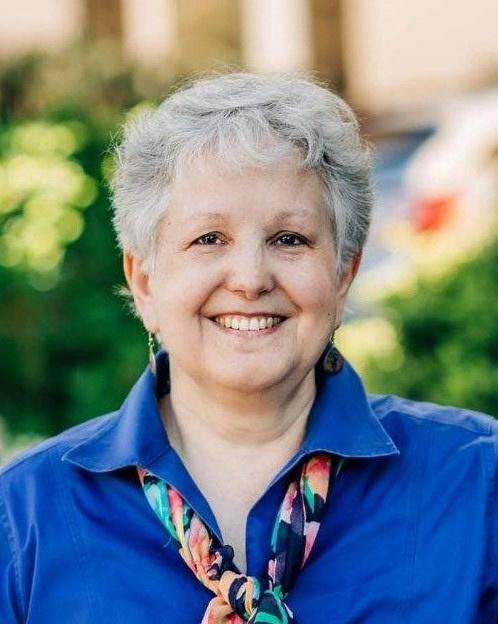 by Marie Clark, Food Moxie Board Member
by Marie Clark, Food Moxie Board Member

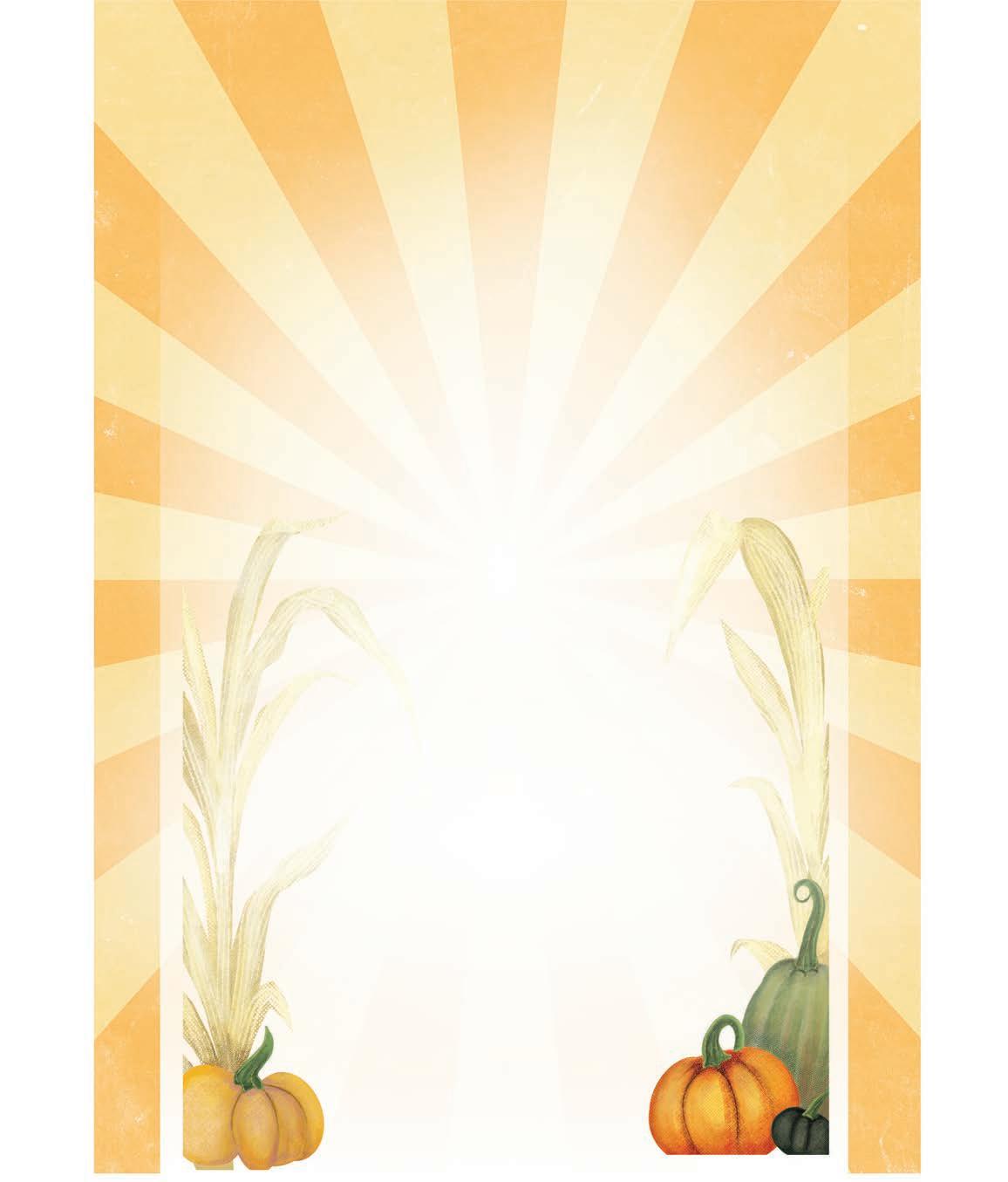
Merissa macdonald Was made for this. Growing spaces and farming are her passions.
With a background in urban horticulture and arboriculture and growing up in a farming family, Merissa joined the Food Moxie team in June to manage the growing spaces where neighbors and the community heal, connect and grow together.
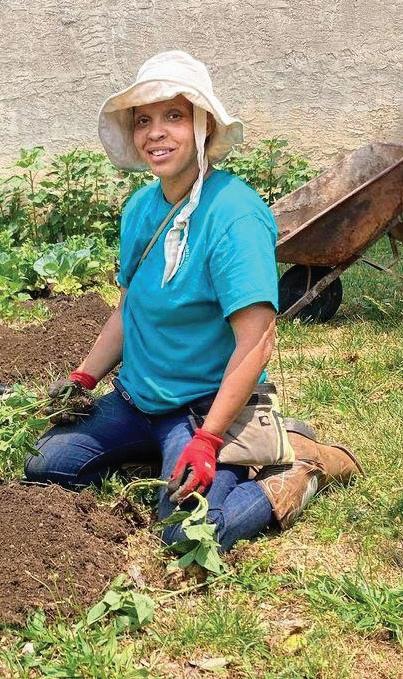
“I'm passionate about making beautiful, bountiful spaces and believe they are vital to our well-being, and I love to teach and love to learn even more,” she said. Be sure to stop by and visit the Stenton Manor’s Hope Garden and our other Food Moxie growing spaces to see the steady progress we'll be making!”
Stenton Manor, the city’s largest emergency family shelter, is home to Hope Garden, a one-acre growing space with raised beds, a greenhouse, and a mini orchard. But as we all know tending to the land is not easy work and Merissa is looking to our Weavers Way community for volunteers.
Helpers are needed for Stenton Manor’s Hope Garden and the other Food Moxie educational growing spaces, including the garden at Martin Luther King High School. This volunteer opportunity is ideal for working Co-op members. Volunteering at a Food Moxie grow-

“Horses and History” Will Again Celebrate Fairmount Park’s Longtime Combo


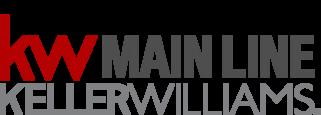 by Nancy Peter, for the Shuttle
by Nancy Peter, for the Shuttle
ing education site is a wonderful service opportunity, allowing you to build your own agriculture, horticulture and arboriculture skills while helping to empower youth and adults to make positive nutrition and health choices.
Interested in volunteering? Contact Merissa at merissa@foodmoxie.org.
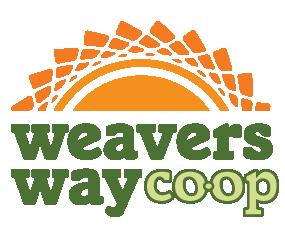
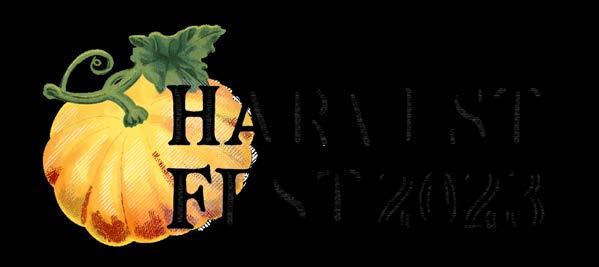
West mt airy’s monastery Stables will once again present “Horses and History” on Oct. 15 to mark the rich connection between the two in Fairmount Park.
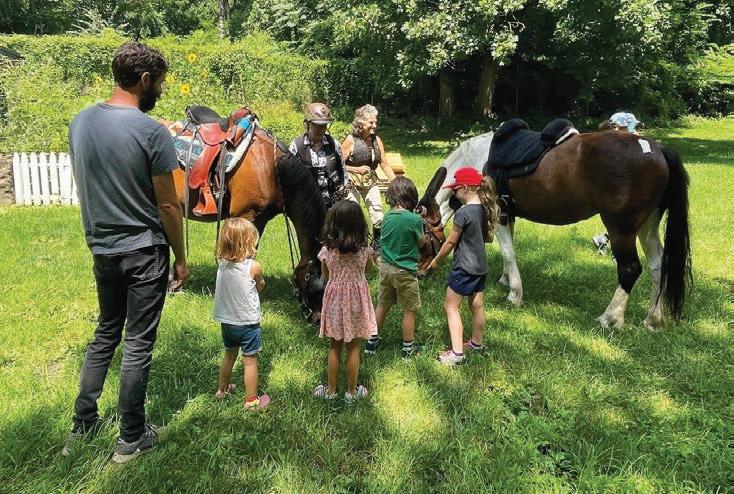
The free event is supported by a grant from the Philadelphia Department of Parks and Recreation and the Fairmount Park Conservancy. All are welcome for an afternoon of grooming lessons and horseback riding demonstrations, indoor tours of the barn and
the Monastery complex, children’s activities, opportunities to meet and pet the horses, and more.
“Horses and History” will take place from 10 a.m. to 2 p.m. at Monastery Stables, 1000 Kitchens Lane. For additional information, visit the stables’ website at MonasteryStables.org, or email Nancy.Peter@verizon.net. In the event of rain, the event will be canceled, so please check the website or call Nancy Peter at 215-760-5308.
4 THE SHUTTLE October 2023 JANET AMES, REALTOR (M) 610-308-0802/ (O) 610-520-0100 THINKING ABOUT BUYING OR SELLING REAL ESTATE? I CAN HELP. CALL ME! 6 Coulter Avenue, 2nd Fl. Ardmore, PA 19003 on The Farm at Awbury 6336 ARDLEIGH STREET, PHILADELPHIA, PA, 19138 SUN. OCT 22 | 11AM- 4PM MORE INFO @ AWBURY.ORG FREE ADMISSION With WEST PHILLY ORCHESTRA JOHNNY SHORTCAKE • ELECTRIC GRIOLAND FARM MARKET • LOCAL APPLES • CIDER • PUMPKINS • HAYRIDES GREAT FOOD • ATTIC BREWING • S’MORES PIT • CRAFTS • GAMES PHILLY BEEKEEPERS • PHILLY GOAT PROJECT • CLUCK PATROL AWBURY FOOD FOREST • PHS • PHILLY MASTER GARDENERS PHILLY HANDWEAVERS S(TREE)TWORK LIGHTNING HOUSE MANY HANDS APOTHECARY TINY HOUSE OF HAPPINESS
Merisa MacDonald
A Term that Started with COVID and Finished with an Expansion
by Michael Hogan, Weavers Way At-Large Board Director

At the end of may, i completed my first term as a board member of Weavers Way. I am pleased that the members elected me to represent them for another term. But mine was an inauspicious beginning.
I completed my candidate video on March 13 (a Friday) in 2020, and the next day the lockdown for the pandemic started. That began a series of virtual seminars for new board members, along with a virtual Finance Committee meeting.
Every board meeting for the first year of my term was virtual. A typical meeting begins with about half an hour of casual conversation while sharing a light meal. That didn’t happen with virtual meetings. Because many of us were strangers to one another, this was not the best way to form new relationships.
Over the course of my first threeyear term, I have served with 16 board members. There were seated members, the newly elected, a few resignations, a couple of invitees and sadly, a death. All the board members worked diligently to help steer the Co-op in what we hoped would be the right direction for its continued success.
I can’t speak for anyone else, but when I decided to run for the board, expansion was not on my mind. Ambler was only a few years old and still growing. The pandemic disrupted almost all the normal activities of the Co-op. The whole world was in turmoil. And then someone
CONTAINER REFUND PROGRAM

pops up and says, “Let’s open a store in Germantown!”
While I am fully and firmly behind the expansion now, my initial reaction was less than positive. Nothing against Germantown — my family lived within an easy walk to what will be the new store for 12 years. But I thought we might be overextending ourselves for the short term.
We were experiencing serious staffing issues in both vacancies and COVID cases. We were challenged by grocery deliveries and curbside pickups. We were limiting the number of shoppers in the stores. Everyone was masked. We had all our resources tested just to keep up.
Nevertheless, a staff team and the board took on the evaluation of an expansion to Germantown. Through the arduous work of the staff and board teams, support from many city, state and federal organizations we secured support from many, and the project began to look doable.
The expansion team gathered a broad accumulation of funding sources for the project, and we were able to sign a lease about a year after the proposal first surfaced. Germantown was looking good!
The team kept at it. Funding opportunities arose that suddenly made it look feasible to buy the site rather than lease it. We conducted a successful member loan campaign, which was evidence of
As part of the Co-op’s efforts to reduce our use of single-use plastic, customers can purchase certain items in reusable containers. There are a variety of containers available, with different deposits required.
Total Containers by Department
Board of Directors
the strong member support for the project. Germantown was looking better!
And this spring, we bought the site. We have begun outfitting the new store. I’m sure our members are eager to attend the to-be-determined grand opening, especially our Germantown members.
Whew! From COVID to Germantown, what a term! I hope my second one will be memorable, but less full of surprises. Thanks for reelecting me.
Thinking of Running?
(Continued from Page 1)
come to a board meeting in the next few months.
We meet on the first Tuesday of the month at 7 p.m. You’ll be able to observe the structure of the monthly meetings, the scope of our responsibilities, and the current concerns of the board and our general manager. Please contact Margaret Funderburg, our board administrator, to let her know that you are interested in attending: boardadmin@weaversway.coop
Recruitment for the board is starting in earnest this month and you are invited to reach out to the Leadership Committee to learn more about the election process for 2024. In addition, there is occasionally a need to replace a board member due to someone stepping down. This generally occurs outside the usual election schedule, so coming forward with your interest in serving is welcomed by the committee all year long.
Much of Weavers Way’s success as an organization with a vibrant business is dependent on the energy, talents and commitment of its members. Becoming a director is a contribution of tremendous value to our organization and to the growing cooperative movement.
The Leadership Committee is also seeking new members to help with candidate recruitment, the election process and more. Committee members can receive member work hours for participating. Interested? Contact the Leadership Committee (leadershipcommittee@ weaversway.coop).
How the Container Refund Program Works
1 Look for labels with a CRP logo on our shelves.
2. Buy the item — the cost of the container is tied to the product.

3. Once it’s empty, wash the returnable item and take it to the Co-op; you’ll get the cost of the container refunded. All CRP lids and containers must be returned food-residue free, fully prewashed.
4. Return containers in a timely fashion to prevent the Co-op from needing to keep buying more stock, and please do not write on or sticker CRP items.
5. Spread the word to family and friends, so they can help save the Earth, too!
October 2023 THE SHUTTLE 5 Store Prep Deli Bulk Produce Grand Total Ambler 4,107 478 1,258 1,857 7,700 Chestnut Hill 4,075 825 1,162 0 6,062 Mt. Airy 2,255 967 2,391 0 5,613 Totals Sold 10,437 2,270 4,811 1,857 19,375 Deposits Refunded 12,419 Return Rate 64%
(as of September 2023) A program run by Echo Systems with support from the Weavers Way Plastic Reduction Task Force
Sept. Homeopathy Letter Gives Medicine Too Much Credit
The July issue of the shuttle featured an article laudatory of homeopathy. Later, you published a rebuttal (“Homeopathy Column was One Sided,” Sept. 2023), but the rebuttal could use a rebuttal. In portraying homeopathy as pseudoscientific and unproven, it implies that mainstream medicine is scientific and proven. It is neither. Mainstream medicine is not “evidence based” or built upon “intellectual honesty,” as the writer suggests. It never has been.
The germ theory of disease, which was built at the outset of modern medicine in the 19th century, remains unsubstantiated, an exaggeration at best. Physician experimenters of the time swallowed cultures of the bacteria thought responsible for cholera yet failed to “catch it.”
Louis Pasteur was a fraud, according to his research journals, which were bequeathed by his grandson to Princeton University. Pharmaceutical companies, conductors of much of today’s “research,” get caught in the act of fraud repeatedly.
Human beings in general are ill-suited for living up to the ideals of science; ego and various psychological failings frequently get in the way. Society makes the conditions for science even tougher by creating a situation in which vast fortunes hinge upon research outcomes. Small wonder it’s so easy to fool oneself, as the physicist Richard Feynman pointed out. Now there’s a good scientist; Feynman, with the astute meta observation. People like him don’t get far in medicine,
where it’s more important to get along than to ascertain the truth.
Like the author of the rebuttal, I favor an evidence-based approach to health that is rooted in science, but the medical establishment provides no such thing. They are more interested in using science as a weapon against those who would refuse their services.
The phrase “there is no evidence that…” is frequently used, generally derisively. This is a wretched epistemology and is different from saying “there is evidence to the contrary.” Often the reason for a lack of evidence is that no one has looked. If anyone looked, they might find some. But studies that don’t lead to financial gain don’t get funded.
And often there is evidence. Anecdotes are data. Lots of anecdotes are lots of data. The double-blind controlled study is a fine methodology, though nearly all of them are “doctored” (pun fully intended). But they are hardly the only way to arrive at proper findings. Medicine likes to claim they are so it can have a monopoly on truth; don’t fall for it.
See this for what it is — an act of aggression against conventional medicine’s competitors (like homeopathy) and ultimately, against everyone. Like it or not, we live under capitalism. Medicine is first and foremost a business — an industry, even — not some sort of public interest institution. If you care about your health, you’d do well to keep that in mind.
Fred Kittelmann
Praise for Horse Shoe Ranch Eggs letter
The article in the september Shuttle about Horse Shoe Ranch eggs (“Horse Shoe Ranch Eggs at Home in the Co-op and Chester County”) is most welcome! I've been eating these eggs for a few weeks now, and they are better. They taste better and look better,
Homeopathy Users Need to Speak Up About Recent FDA Changes
by Annabel Grote and Maryann Helferty, Weavers Way members and members of Americans for Homeopathy Choice Action
It is Well knoWn that the co-op’s wellness stores sell single homeopathic medicines and many other homeopathic combination products. But the easy access we now enjoy to these medicines is being put at risk by a recent shift in policy by the U.S. Food and Drug Administration.
Karen Palmer’s July 2023 Shuttle articlKaren Palmer’s July 2023 Shuttle article (“Homeopathy 101: Unlocking the Power of Natural Healing”) gave a wonderful overview of this complex natural system of medicine. We search for Arnica for bruises or falls, Cantharis for burns, or Rhus tox for poison ivy, easily finding what we need for first aid or more advanced interventions.
Homeopathic medicines have been manufactured in laboratories with FDA oversight for over 80 years. During this time, the FDA recognized them as a unique category of drugs.
In December 2022, the FDA issued new draft guidance indicating that, moving forward, all homeopathic drug products are subject to premarket approval requirements. This means that all homeopathic drug products are considered “unapproved new drugs” and thus the manufacturing companies would have to pay for the product to go through the new drug approval process.
of standard drug companies, thus putting even more financial burden on the companies that manufacture them.
What if all the globules, ointments and tinctures in our cabinets were suddenly removed from the shelf? What if we no longer had access to any of them, including the ones that a homeopath may deem necessary for treatment of a rare or serious condition that may be difficult to treat? This is already happening.
The goal of Americans for Homeopathy Choice Action is to modernize the law regarding the regulation of homeopathic medicines to provide a clear, consistent and stable framework for the growing number of Americans who rely on homeopathic medicines to restore and maintain their health. This will ensure safety while preserving consumer and practitioner access to the full range of homeopathic medicines from a diversity of suppliers in a resilient and competitive marketplace.
The homeopathic community is in a fight for its life to preserve all the elements needed in this holistic system of medicine. We urge all who read this article and care about these issues to join Americans for Homeopathy Choice (www.homeopathychoice.org). The website provides much more information.
even
by comparison with the (more expensive) “happy chicken” eggs I was buying. Another nice thing is, occasionally a blue egg is included with the browns; it's fun! Nice to learn more about their origin.
Richard Senerchia
It would be extremely onerous and expensive, if even possible, for a company to pay to have natural substances such as witch hazel, Leopard’s bane, carbonate of calcium, etc., approved as new drugs. This mandate is putting some companies out of business. The FDA also stipulated that manufacturing procedures for homeopathic products should mimic those
Free membership will get you on the mailing list so you can respond to calls for political advocacy as needed. You can also join Homeopathic Action Teams.The Montgomery County and Philadelphia County teams advocate with members of Congress. Join us in our efforts to protect access to these amazing natural products so many of us use to enhance health and solve serious medical conditions.

6 THE SHUTTLE October 2023 SHUTTLE LETTERS POLICY The Shuttle welcomes letters of interest to the Weavers Way community. Send to editor@ weaversway.coop. The deadline is the 10th of the month prior to publication. Include a name and email address or phone number for verification; no anonymous letters will be published. Letters should be 200 words or less and may be edited. The Shuttle reserves the right to decline to publish any letter. L•E•T•T•E•R•S O•P•I•N•I•O•N Custom Work in Older Homes . Based in Mt. Airy since 2001. www.CalebSchodt.com 215-849-2003 Fully licensed and insured. OSHA-30 Certi ed. Local references.
Why We Had to Remove Our Community Fridge and Pantry in Ambler
by Jon Roesser, Weavers Way General Manager
As oWners of the co-op, you’ll be pleased to know that the annual health inspection of our Ambler store, which took place the last week of September, was an uneventful affair.
Of course, health inspectors always find something. Some backstock shelving that wasn’t at least six inches off the ground. Dusty vent fans in some of the cases. Frost buildup inside one of our freezers. All little stuff like that, and all easily correctable.
Oh, and this: They made us shut down the Ambler Community Fridge. Here, some backstory might be useful.
While they’re now found all over the place, the community fridge movement is not even a decade old. It started in Germany and quickly spread to the rest of Europe. Over the last five years, and especially during the height of the pandemic, it took off in the United States as well.
Community fridges are grassroots endeavors, operated by groups of volunteers who do the heavy lifting of soliciting donations, often via social media. They also keep the fridges clean and well stocked.
Since they are available 24/7 and are unmonitored, they allow free access by anyone. Advocates claim they remove the stigma some people feel when they need help putting food on the table.
The Ambler Community Fridge was born out of a service project by students at Germantown Academy. The students and their advisors raised the funds to buy the refrigerator, built a wood shelter to protect it from the elements, and then sought out a location where it would be easily accessible.
We were already supporting a couple of other community fridges and were therefore happy to have the opportunity to play host to one. So the fridge was set up outside our Ambler store in May 2021.
It was, I’m afraid to say, an instant hit. Anyone who doesn’t believe food insecurity is a problem every-
where in our country, including middle class suburbs, should have spent some time hanging outside our Ambler store. The need has been constant, and the fridge has helped dozens, perhaps hundreds of people over the last couple of years.
(That this problem exists at all, and that a more compassionate, humane public policy befitting a prosperous, moral people could essentially solve it, is a subject for another day).

Anyway, having a community fridge outside a grocery store proved to be an efficient model. Customers could buy a quart of milk or carton of eggs for the fridge as part of their regular shopping trip. Co-op staff would use cash donations to keep the fridge stocked. Minor hiccups and operational challenges notwithstanding, things were going along well.
Enter the Montgomery County Health Department. New regulations require food that is being given away be subject to the same rules as food being offered for sale. Community fridges, filled with food donated from all sorts of untraceable sources and accessible by anyone at any time of day, run afoul of those regs.
Make no mistake, the health department’s right.
People, well-intentioned as they may be, put all sorts of weird things in the fridge. Expired milk from Wawa. Homemade casseroles containing unknown ingredients. Half-eaten hoagies (no kidding).
That community fridges and health department regulations don’t easily align should surprise no one. The Montco health inspector was sympathetic, and we talked about some potential solutions. But the bottom line is that we’re in the food biz, are subject to health inspections, and food safety rules exist for good reasons.
So the fridge has been removed, along with the accompanying 24/7 pantry of non-perishable foods. We’re considering alternatives.
For now, a sign has replaced the fridge, encouraging anyone who needs food to come inside the store, where staff will give them a $10 food voucher, no questions asked. That’s at least something, but it only works when the store is open, and it requires anyone in need to take the initiative to ask for help, a difficult thing to do and something the community fridge made unnecessary.
Ambler’s venerable food cupboard, Mattie Dixon, located a few blocks from our store, continues to be there for anyone in need. And Ambler borough officials have been in touch with us to discuss ways the community fridge, or something comparable, can be reborn.
In the meantime, we continue to be a source of food and funds for two community fridges in Germantown, one on Armat Street outside Greene Street Friends School and one on High Street outside First United Methodist Church of Germantown. These two fridges are maintained by a group of hardworking volunteers, and we will continue to support their excellent work.
Stay tuned for updates as we search for a long-term solution.
See you around the Co-op.
October 2023 THE SHUTTLE 7 GM’S CORNER GM’S CORNER
“
Peace is in the heart of every human being. www.premrawat.com WEAVERS WAY A General Store of Local & Unique Finds Saturday & Sunday 10am - 5pm 542 Carpenter Lane www.weaversway.coop/mercantile @weaverswaymerc Your Clutter, Our Bread & Butter! Looking to downsize? The Mercantile is your local vintage store, specializing in pre-1970s clothing, rugs, records and furniture. We Want to Buy from YOU! Want to sell? Send photos of your items to nsaphos@weaversway.coop or rick@weaversway.coop and we’ll get back to you. NO DROPOFFS, PLEASE! “Oh, no, I forgot to save the Earth! ”
“ The
fridge has helped dozens,
perhaps hundreds.
N1 Theatre Seeks to Find and Build an Audience in Northwest Philly
by Karen Plourde, Editor, Weavers Way Shuttle
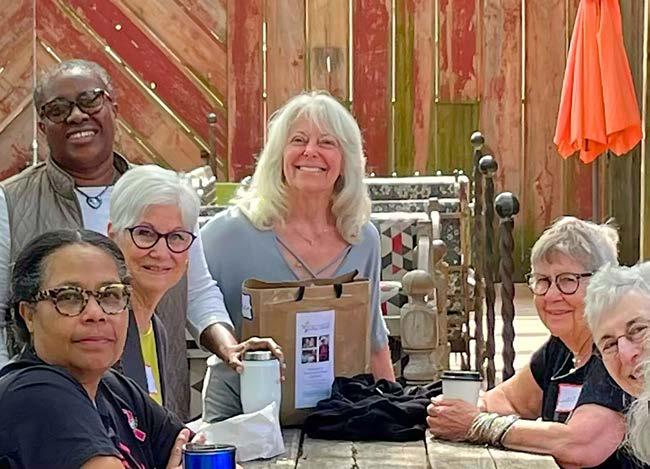
Dennis moritz, a Weavers Way member and self-described “poet who writes plays,” has been at his craft for 50 years and has written and published 40 plays during that time. But until the COVID pandemic hit, he hadn’t done any directing.
Thanks to the reticence of his producing partner, Robert Craig Baum, to travel from his home in College Park, MD, to Philadelphia to rehearse, Moritz jumped into directing. Now, after years of producing new works in New York City, he’s trying to establish his theater group, N1, in Germantown, his adopted home.

“It felt very familiar,” he said of the experience of directing. “I’ve worked with some wonderful directors…. A long time ago, I was in an actors’ workshop for a year with (performance artist, playwright and theater director) Laurie Carlos. I’d go to Harlem every Sunday. And she was a marvelous director; she had a great affinity for actors.”
Moritz, 76, has continued to build on his directing chops over the last year. The group, made up of Northwest Philly-based artists Daralyse Lyons, Beverly Gunn, Effie Kammer and Paul Pirozzi (a/k/a Wharton Track) performed four shows in New York last year. Three of those were short plays of Moritz’s that were performed at Torn Page Theater in Chelsea. Last month, they staged Moritz’s short plays “Uncle”, “Blues in a Buick” and “Love Luv” as part of the Philadelphia Fringe Festival at their home venue, Our House Cultural Center in Germantown.
Moritz will soon start a writing workshop at Our House and will teach “Writing the Scene,” a theater writing workshop, through Mt. Airy Learning Tree during the winter term. He plans to produce “at least two or three more productions” of new work there and/or at his rehearsal space on Washington Lane. He cut his teeth as a playwright in the late 1980s at Brooklyn Arts Council, which was entirely devoted to original work.
“We had readings every week, we had bare bones productions every month, and three or four major productions, too,” he recalled. “It was such a vibrant, creative place; I’ve always wanted to return. And now, we hope to make something of it.”
Moritz said N1 produced “at least” 20 original scripts last season in New York as part of three Boog City Arts Festivals. He curated, directed and was the dramaturg for the productions. The group also performed rehearsed readings in front of an audience of artists and others.
“People were fascinated, and no one left,” he said. “We even had to produce once in an alley, because the venue got shut down the day before.”
Along with generating new plays, Moritz is also looking to develop actors locally.
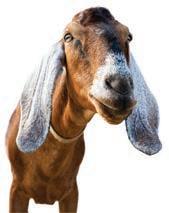
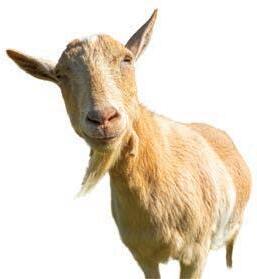
“I love working with people who want to act, who haven’t been trained,” he said. “I think there’s a great amount of talent which gets overlooked.… The theater model, as it exists today, is the regional theater model. There are no black boxes. They do not support original theater; they produce plays that have been produced before elsewhere and developed elsewhere.”
Moritz believes the lack of “black boxes” (neutral spaces where actors can try out and develop new work) in theaters hurts the development of new scripts.
“As far as I can tell, there’s no opportunity for new writers to find a community in which they can write and then see their work up,” he said. “In theater, writing has an entirely different feel than writing for the page. And theater writers need to see and understand how language works for actors. That’s how I learned.”
Next March, Moritz is planning to stage a production of his play “Hungry Heart,” based on the life and writing of Jewish American novelist Anzia Yazierska, on the Lower East Side, where he grew up. The play’s development was originally assisted by Theatre Ariel in
South Philly. Aside from that project, his emphasis going forward is for N1 to make its mark in Philly.
“I think Germantown, Mt. Airy, Chestnut Hill — I believe that’s our audience,” he said. “We’re multiethnic, we’re liberal and we’re challenging artists. In my autonomic nervous system, I feel this is our audience, and so I want to develop it…. I think there’s so many people here who would love to be challenged by art, and I think there’s a hunger for it.”
More info on N1 Theatre is available on their website: www.n1-theatre.com.
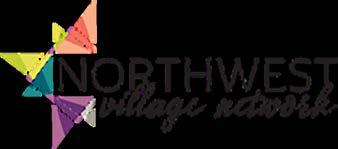
The World’s Oldest Living Tattoo Artist
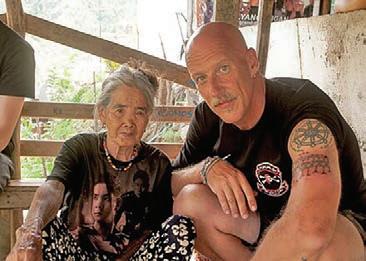
Whang-od ogga (1/17/1917-), also known as Maria Oggay, is a 106-year-old Filipino tattoo artist who traces her ancestry to the indigenous Kalinga people of northern Philippines. Traditionally, only men with tattooing ancestry could practice this centuries’ old sacred art. Whang-od became the exception to that rule when she began learning the artistry at 15 from her father, a master tattoo artist.
Whang-od, the world’s oldest living tattoo artist, practices the pre-colonizer batok form of tattooing, and is now training two members of her bloodline to continue this revered art. Her tattooing is now limited to one design — her signature three-dot tattoo. In April, Whang-od became the oldest person to appear on the cover of Vogue magazine.
—Rosa Lewis
Racial Diversity, Equity, and Inclusion

8 THE SHUTTLE October 2023 CONNECT Seniors Social Gatherings Film Discussions Community Connections Arts & Culture Social Justice Engagement Ride Share 267-571-9697 Northwest Village Network.org ENGAGE THRIVE Join us at our Saturday Socials! Every Saturday - 10am-12pm @ Market at the Fareway in Chestnut Hill MEET THE GOATS 2024 GOAT CALENDAR LAUNCH WIN ART CREATED BY THE GOATS EXCLUSIVE PGP SWAG FOOD–DRINKS–SIGNATURE COCKTAILS AND MUCH MORE! THE GOAT CALENDAR WIN ART CREATED THE GOATS EXCLUSIVE COCKTAILS AND MUCH VISIT PHILLYGOATPROJECT.ORG FOR DETAILS AND TO PURCHASE TICKETS! VISIT PHILLYGOATPROJECT.ORG FOR DETAILS AND TO PURCHASE TICKETS! *KIDS AGES 14 AND UP MAY ATTEND WITH THEIR OWN TICKET AND GUARDIAN
A poster for Dennis Moritz’s short play, “Blues in a Buick”, which was performed by N1 as part of the Philadelphia Fringe Festival last month. Pictured are Paul Pirozzi (a.k.a Wharton Track) and Effie Kammer.
Fall Valley Talks Focus on Wildlife Watching and Climate Change
by Ruffian Tittmann, Executive Director, Friends of the Wissahickon
Every fall and spring friends of the Wissahickon hosts Valley Talks — a free lecture series featuring a variety of Wissahickon-related topics ranging from history and habitat to environment and watershed.
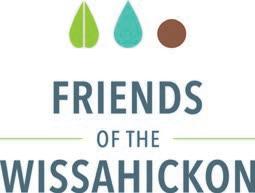
The Pennsylvania Game Commission shares FOW’s passion for conservation as part of its mission to manage and protect wildlife and their habitats. We welcome back our partner for another Valley Talk, the first of two this fall.
A Bird’s Eye View of Watching Wildlife in Pennsylvania
Jordan Sanford
Wednesday, Oct. 25
Do you ever wake to a chorus of songbirds and wonder who is singing outside your window? Are you interested in watching wildlife in their natural habitat, but aren’t sure where to go? Pennsylvania is home to 480 species of wild birds and mammals. In this session, Jordan will introduce you to places you can safely go to see wildlife and what equipment you’ll need. From the Elk Range in north central Pennsylvania to the wetlands of Middle Creek Wildlife Management Area in the southeast, there’s something somewhere for everyone. He’s a wildlife outreach coordinator with the Pennsylvania Game Commission, our state wildlife agency. Register to attend at fow.org/vtwildlife.
Valley Talks reflect FOW’s dual mission “to conserve the natural beauty and wildness of the Wissahickon and stimulate public interest therein.”
To make Wissahickon Valley Park even better for its more than two million (and growing!) visitors, FOW has garnered the support of dozens of city and state partners, like the game commission. But our role as stewards benefits more than the park’s human visitors. Many different species of migrating and resident insects, birds and mammals call the Wissahickon home.
Through strategic planning and implementation, we also support this delicate ecosystem and natural environ-

ment by conserving and improving the park’s 2,000 acres of woodlands, meadows and streams.

One of FOW’s top priorities in recent years has been to foster ecologically diverse and functional habitats in the Wissahickon through our Ecological Land Management plan. Since it was completed in 2018, the ELM has informed best management practices for restoration efforts based on observed conditions in the park, impacts of invasive plant and animal species, and increased visitation.
The current plan looks to break up the park into 23 hydrologic management units, or miniwatersheds, which cover the drainage area of each tributary to the Wissahickon Creek. Each unit identifies key plant and animal species as indicators of its overall ecosystem health and sets guidelines for preferred land management techniques in that area. The ELM also designates areas of priority usage so that humans and wildlife each have spaces to themselves for preservation, restoration and access. When we know what lives where, we can be intentional about where we place our restoration projects for the biggest effects on critical species.
This fall, FOW, in partnership with Philadelphia Parks & Recreation, will be replanting a small canopy
gap with 120 trees and shrubs off a segment of the Yellow Trail just uphill from Kitchens Lane. ELM has rated the slope along Wissahickon Creek both as having a high restoration potential and being a priority restoration and conservation area.
Climate Change in our Watersheds
Marc Peipoch, Ph.D.
Tuesday, Nov. 7
River watersheds like the Wissahickon are particularly vulnerable to the accelerating effects of global warming, and aquatic communities may not be able to keep up with the pace. What can we expect in the short term and how can we help river ecosystems adapt to these rapid changes? How can we adapt to them?
Marc will discuss the implications of climate change on our watershed and the actions we can take now. He is a freshwater ecologist and a research scientist at the Stroud Water Research Center in Avondale, Chester County and investigates the effects of global change on streams and rivers. Register to attend at fow.org/vtclimatechange.
Valley Talks take place from 6 to 7 p.m. in person at Valley Green Inn and virtually (online registrants will receive a Zoom link before the presentation). They are presented by Prentiss Smith & Co.
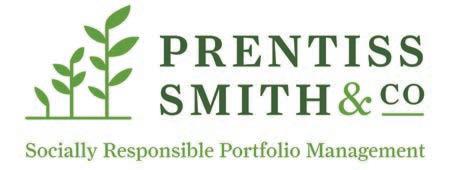

The




October 2023 THE SHUTTLE 9 FIND US ONLINE www.TheResiliencyCenter.com TheResiliencyCenter ResiliencyCntr resiliencygatherings Join us for counseling and FIND US IN FLOURTOWN Flourtown Commons 1811 Bethlehem Pike Suite 212-213 (215) 233-2002 and connect
Resiliency Center is your place in G reater Philadelphia for Healing, Education, and Community.
photo by Sean Hillas
MEMBER BENEFIT notary service BY APPOINTMENT Mt. Airy: 215-843-2350 x119 or notary@weaversway.coop Germantown: cpoinvil@weaversway.coop ANOTHER GREAT REASON TO JOIN. shop bulk save money & reduce waste
One of the Wissahickon’s colorful frogs from FOW’s 2020 biennial photo contest.
FUMCOG Raising Funds for Church To Make the Switch to Solar
by Mark Smith, for the Shuttle
Abaptist church in hunting park Will benefit from the electricity generated from a solar array to be installed on its roof through fundraising efforts led by First United Methodist Church of Germantown’s climate action committee.
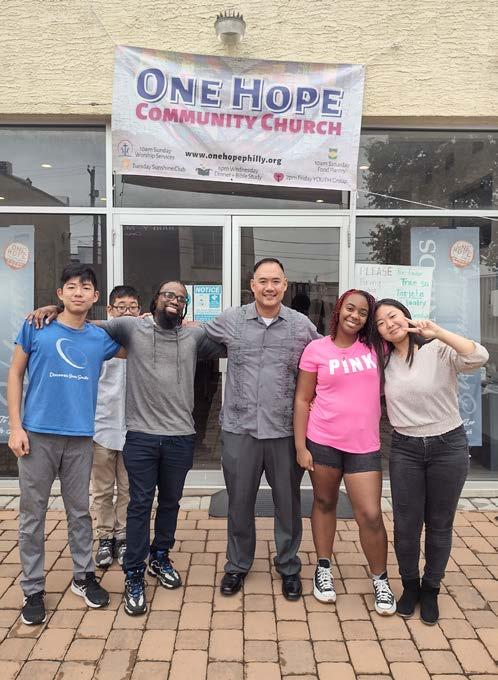

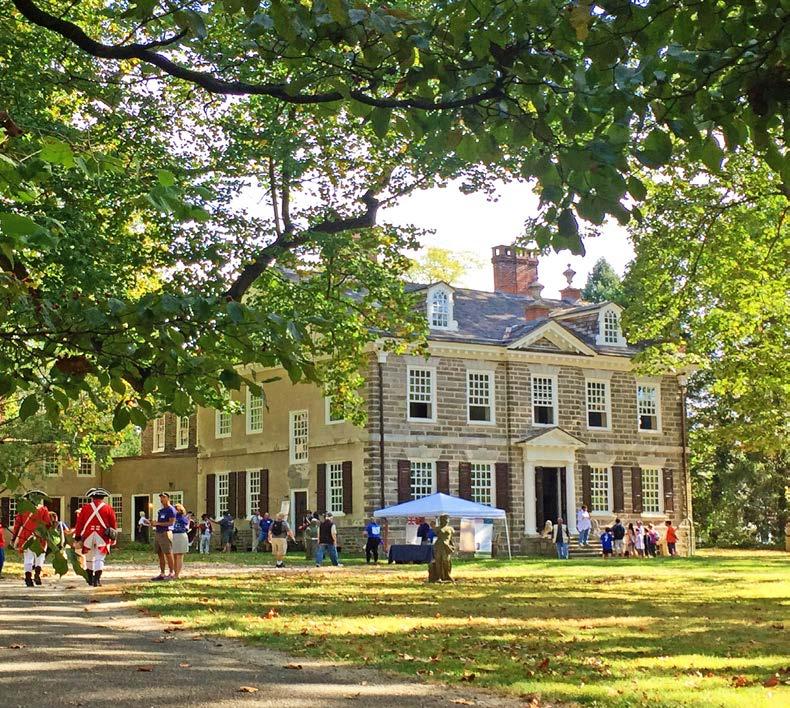
The 26.2-kilowatt installation will be set up on One Hope Baptist Church and owned by the Hunting Park Community Solar Initiative. The key to the development of the project is a provision in Pennsylvania's renewable energy law that allows any meters of the same owner within two miles of the solar panels to receive energy from the solar installations. That provision for “virtual meter aggregation” provides an opportunity for lower and middle-income residents in urban areas to participate in renewable energy. In the case of the One Hope project, up to five residential sites nearby will be heated through the array.
One of the unique aspects of this project is the notion of “sharing” rather than “donating” electricity. One Hope Baptist and the residential recipients of the generated electricity will "share forward” a portion of their savings to the work of HPCSI, which could lead to more families signing on to renewable energy.

The cost of the installation ($75,000) will be lessened thanks to a 40% direct payment from the Inflation Reduction Act. HPCSI will commit $10,000 of that direct payment to develop a second “solar sharing” project like One Hope Baptist’s. Donations will also support HPCSI's training program for solar installers. In addition, HPCSI will sell renewable energy credits each year as an ongoing revenue source.
The One Hope/HPCSI project is the second collaboration between faith groups and nonprofits in which solar power will be generated to directly benefit vulner-


able members of their community. The first, at Second Baptist/Family Promise Philadelphia (formerly Interfaith Hospitality Network), celebrated its first anniversary in September. The panels on the roof of Second Baptist provide a large percentage of the electrical needs for Family Promise Philadelphia, and the electricity provided by the solar installation frees up more funds to address the shelter and food needs of FPP's clients.
These projects directly address the high up-front cost of solar installation, which has kept lower and middle-income families from participating.
After the initial “Challenge Pledge” phase was completed in mid-September, a broader outreach is underway for the One Hope/HPCSI solar installation. For more information and/or to give through GoFundMe, scan the QR code at right.

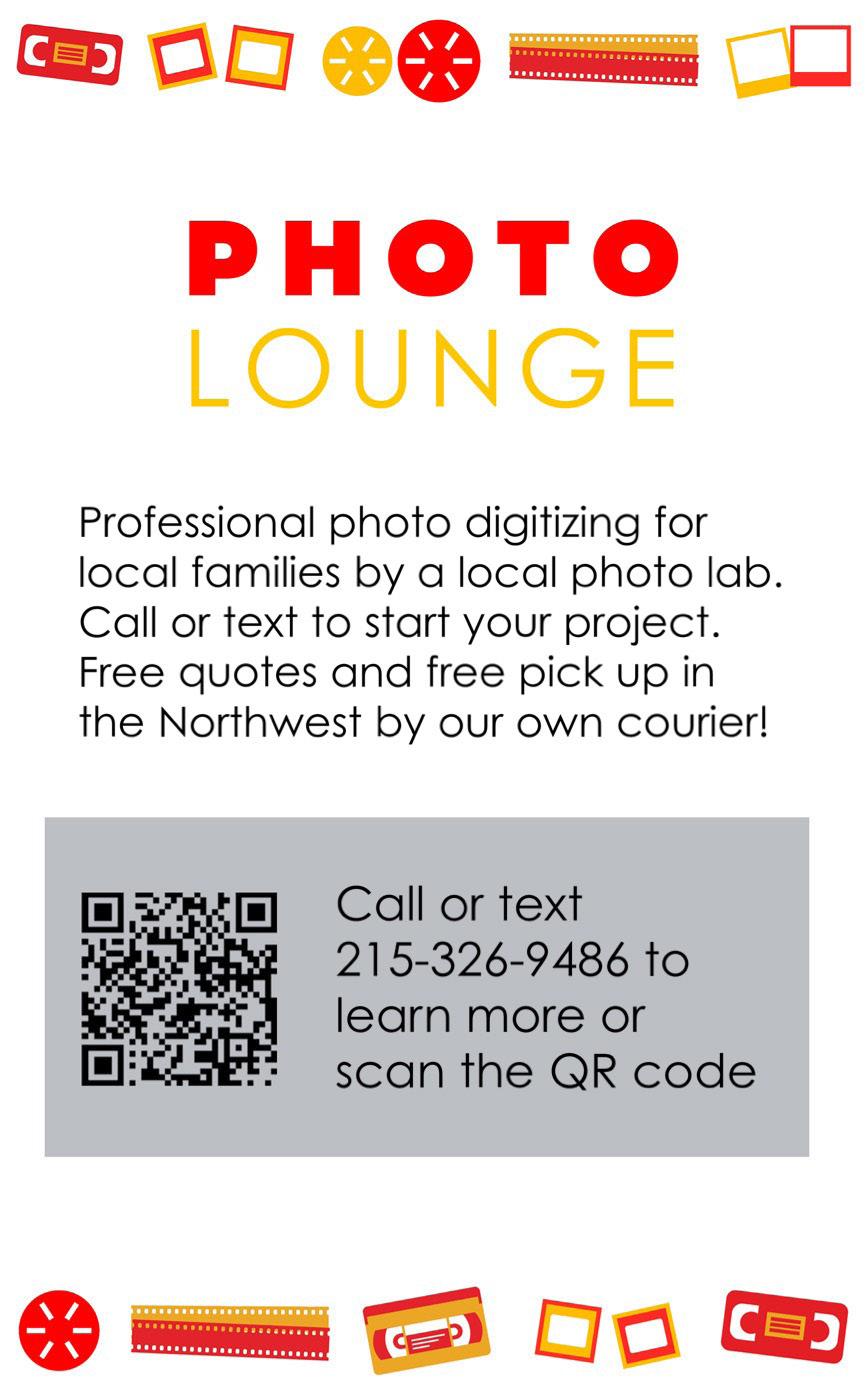
Mark Smith is a member of the Climate Action Committee at First United Methodist Church of Germantown.

10 THE SHUTTLE October 2023 Saturday, October 7, 2023 10 am - 4 pm, Rain or Shine Join Cliveden & the sites of Historic Germantown for a day of fun while learning about our community’s revolutionary history. Free & open to visitors of all ages! cliveden.org/revolutionary-germantown-festival/
6401 Germantown Avenue, Philadelphia, PA 19144 | 215-848-1777 | cliveden.org
The Museum of the American Revolution | Randall & Linda Miller | The Reed Group William Penn Charter School | Wissahickon Landscape Design
Above, Pastor Mark Lim (center) and members of One Hope Community Church in North Philly, on whose rooftop the solar array will be installed. At left, a photo of the schematic, provided by the installer, Solar States.





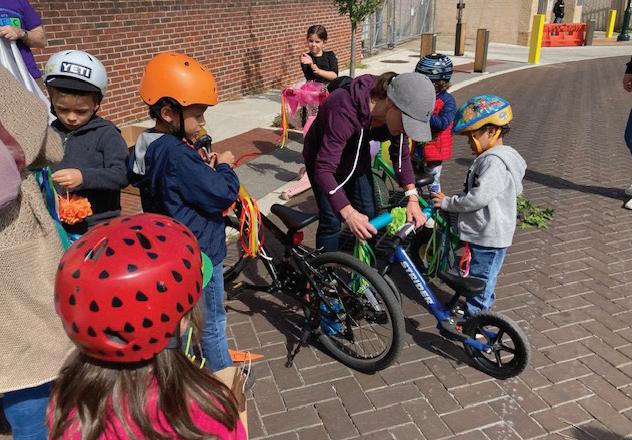
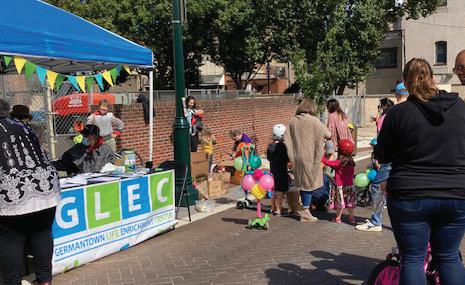
October 2023 THE SHUTTLE 11 www.penncharter.com/visit Schedule your visit today: Penn Charter students are COURAGEOUS LEARNERS. This exhibition was supported by a generous grant from the Henry Luce Foundation. Additional support was provided by Eiseman Construction, Inc and Michener Art Museum’s Corporate Business Partners Never Broken: Visualizing Lenape Histories is one in a series of American art exhibitions created through a multi-year, multi-institutional partnership formed by the Philadelphia Museum of Art as part of the Art Bridges Cohort Program. never broken Visualizing Lenape Histories September 9, 2023 — January 14, 2024 Michener Art Museum 138 S. Pine Street, Doylestown, PA MichenerArtMuseum.org Artist Unknown (Delaware), Bandolier Bag 1850s. Cotton, wool, silk, and glass beads, 28 ¼ x 21 ¼ x 2 ¼ inches.Brooklyn Museum, Frank L. Babbott Fund, 2021.41. (Photo: Brooklyn Museum) photos courtesy of Connie Bille’ The Germantown Life Enrichment Center rounded up kids and their bikes for a second year on Sept. 30 for the Kids Bike Parade, part of 92.9’s Community of Joy Festival on Maplewood Mall. Kids decorated their bikes beforehand and soaked in the early autumn sunshine.
WEAVERS WAY EVENTS
Ambler Sampler
Sunday, Oct. 15 10 a.m. - 1 p.m.
WW Ambler
Come taste the harvest season with samples from our awesome local food vendors! The Montgomery County 4-H Goat Club will also bring goats and set up a cuddle corner.
WOW Expo Festival
Saturday, October 21 10 a.m. - 6 p.m.
Plymouth Meeting Mall
Find us at this local Wellness Expo, where you will find health and wellness vendors, an Earth-friendly marketplace, a healthy food court and speakers. Visit wowexpo.com for info.
Raise your Glass: Tailgating Edition
Sunday, Oct. 22 Noon - 4 p.m.
WW Ambler
Raise your glass and pump up your team spirit with local libations from Attic Brewing Co., Forest and Main Brewing Co. and Widows Peak Distilling Co. It’s a great way to support local businesses all in one place while stocking up on some pre-game grub!
Home Buying Seminar
Wednesday, Oct. 25 6 - 8 p.m.
326B W Chelten Ave
Do you have a goal of buying a home in 2024? Then this seminar is for you! Attendees will learn how to buy a house in 10 steps. You'll learn the different loan options and even get tips on how to repair your credit. This class is run by seasoned realtors David Foster of Integrity Real Estate Services and Robert Farmer of Acre Mortgage & Financial, Inc.
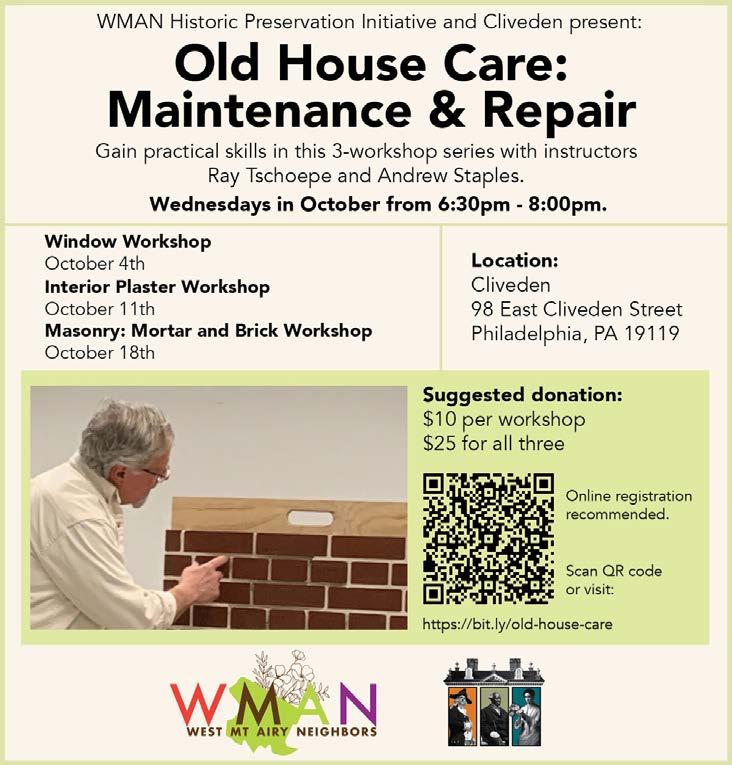
Fall Chili Sale
Monday, Oct. 30 5 - 8 p.m.
326B W Chelten Ave
Join us at the Germantown Outreach Office for a bowl of warm chili on a cool fall evening. Bowls of chili will sell for $5 (or less if you are a person in need) and be paired with a side of cornbread. Guests are invited to eat in or take out.
EVENTS ARE FREE
Virtual New Member Orientation
Tuesday, Oct. 24 6:30 - 8 p.m.
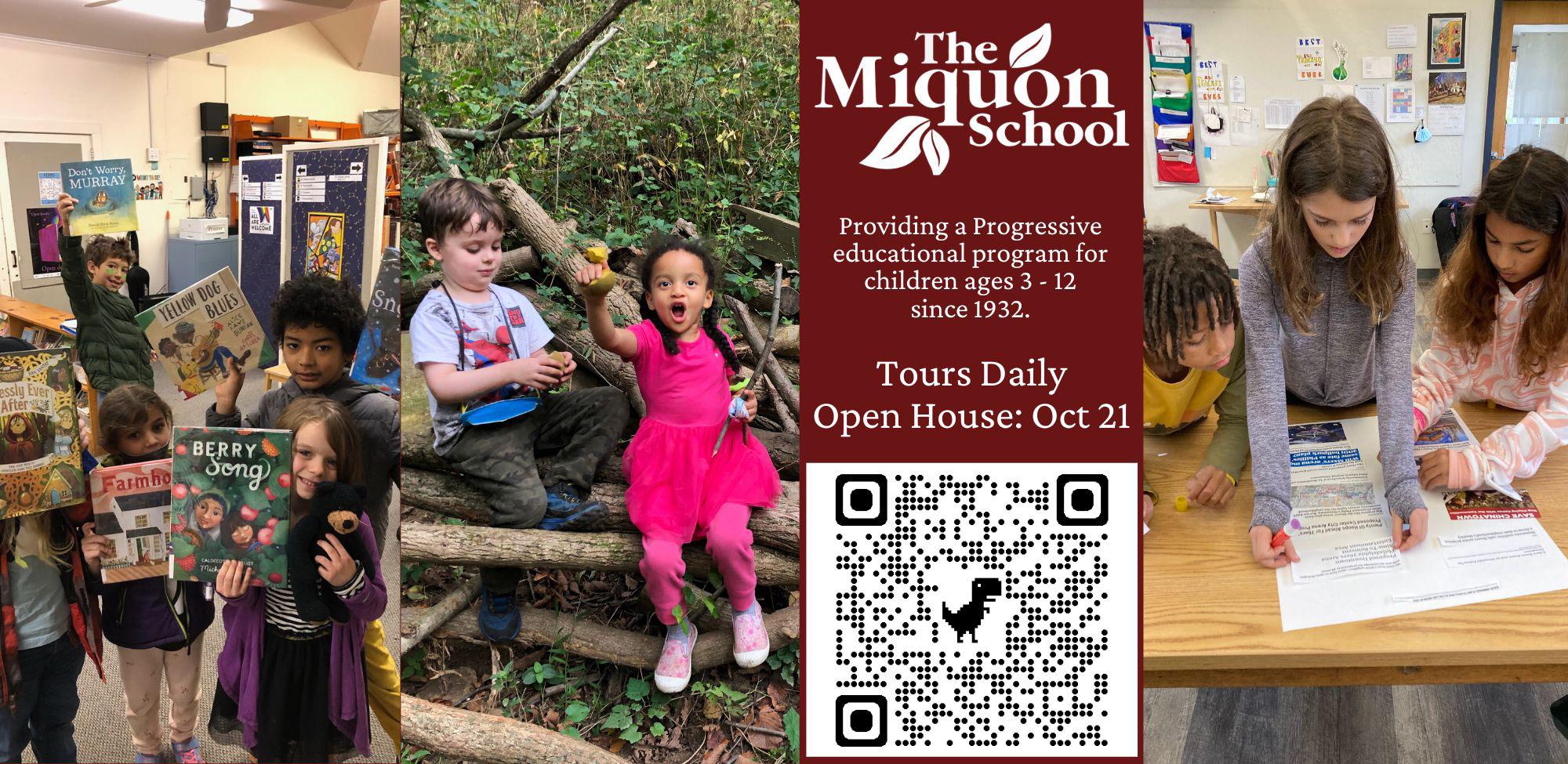
Germantown Outreach Office
326B West Chelten Ave
We encourage all new members to attend a member orientation. This session will include an overview of membership at the Co-op, how it works and why it's valuable. We'll explore our online Member Center, discuss the benefits of membership and help you choose if working membership is right for you! You will receive two hours working member credit. The orientation lasts approximately 1.5 hrs. Questions? Contact membership at member@weaversway. coop or (215) 843-2350 ext. 119.
Membership Office and Notary Hours
Mt Airy: 555 Carpenter Lane
Membership and Notary Services
Monday - Friday 11 a.m. - 5 p.m.
For more info: www.weaversway.coop/events
Airy Kitchens

12 THE SHUTTLE October 2023
We design spaces that make people happy AiryKitchens.com
WOW Expo Will Feature Local Vendors, Natural Health Practitioners
by Lee Bowman Gannon,
for the Shuttle
There’s a buzz going around the World of Wellness Natural Health Expo (a/k/a WOW Expo) on Oct. 21 at Plymouth Meeting Mall and its efforts to bring together the local natural wellness community and earth-friendly businesses. In fact, two of the exhibitors could sum up these efforts all by themselves.
Kara Jo Lehman, also known as “Queen Bee,” teaches English at Wissahickon High during the week but spends time away from the classroom tending her honeybees. She’s the head developer for her all-organic product line Kara Jo Skin Care, which incorporates honey and beeswax from her apiary along with medicinal herbs from her garden.
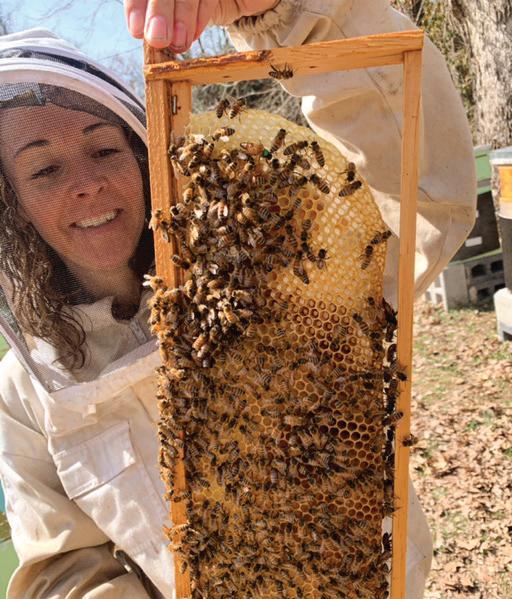
“I had really bad acne as a teen and into-my-20s,” Lehman said. “I tried every over the counter and prescription medicine I could to clear up my skin, and nothing really helped.”
Once she turned to Mother Nature and learned about herbally-based products, her skin issues improved.
“I was so helped by the organic, herbal remedies that I decided to create a line that I could share with others to be a solution for their skin issues so they too could safely walk away from the toxic chemicals and find help from nature,” she said. Kara Jo and possibly her honeybees will be joining the Expo in the Mother Earth Marketplace.
Amish goat farmer Daniel Stoltzfus of Peaceful Springs Goat Farm in Honey Brook, Chester County found that turning to grass-fed goat milk that was free of chemicals, GMO ingredients and soy helped his family go from sickly to robust.
“We started raising our goats and chickens from a more natural and toxinfree approach 18 years ago because we were sick, as a family, all the time. We did our research and decided to stay away from harmful pesticides and toxic ingredients, let our animals roam free in the fresh air and feed on pesticide-free grasses and wild field edibles,” he said.
You can learn more about Stoltzfus and Peaceful Springs’ products from Daniel and his family at the Expo’s Garden of Eating Healthy Food Court.
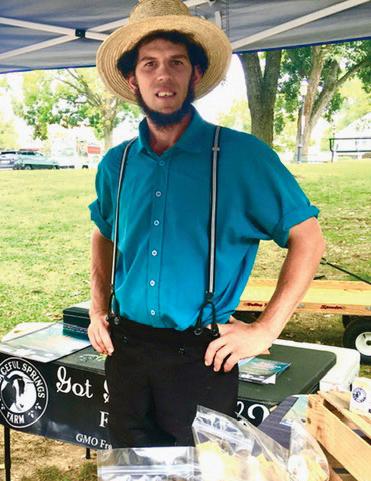
The Expo will also welcome Dr. Gordon Donaldson of Donaldson Family Practice of Elverson, Chester County, who will speak about “Natural Choices Parents Can Make for Building Childhood Health.” His talk can help parents start a wellness protocol ahead of the fall/ winter cold season. He will be accompanied by his practice’s pediatrician, Dr. Timothy Tam, and will be available to answer questions starting at 2 p.m. before his 3 p.m. talk and after his presentation. You can find his and Tam’s table next to the Children’s Health Defense PA table at the Expo in the Giving Garden section of the show.
Anita Timmins of Boiron Homeopathics, one of the two presenting sponsors of this year’s show, said the Newtown Square-based company is happy to support the event for a second year.
“We believe in community events that offer consumers a chance to explore and learn about more natural approaches to wellness, and the WOW Expo is right on target with that goal,” she said.
Nima Koliwad, community programs coordinator at Weavers Way, the other presenting sponsor, said the Co-op is excited to be part of the Expo. “It gives us a great opportunity to connect with the community, introduce the Co-op and its offerings and shine a light on local health and wellness product vendors,” she said. “We hope to see lots of members and meet new people!”
Head volunteer gardener AnnMarie Gincley, of East Mt. Airy’s Werner’s Community Garden, this year’s beneficiary of net ticket sales, said the group appreciates the support they’ve already gotten from the Expo.
“It’s not easy to solicit donations, and the community support we’ve received so far to preserve the garden has been astounding,” she said.
To learn more about the lineup of holistic speakers and exhibitors or to volunteer at this year’s event, which takes place from 10 a.m.-6 p.m., go to the Expo website at http://www.WOWEXPO.com.
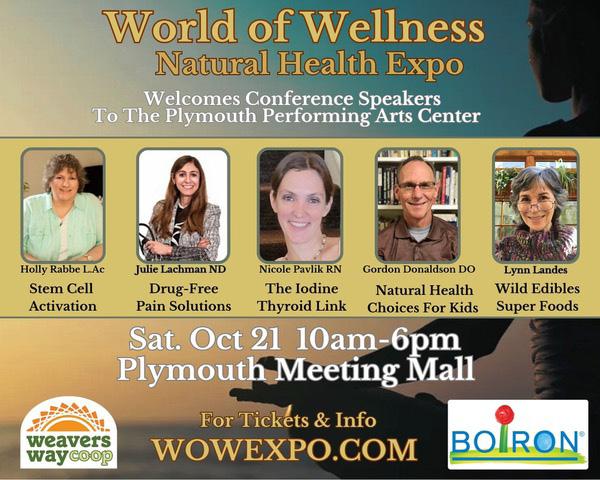
October 2023 THE SHUTTLE 13
Above, Daniel Stoltzfus of Chester County’s Peaceful Springs Goat Farm. At left, Kara Jo Lehman with some of the bees that produce beeswax and honey for her organic skin care line.
Supreme Court Decision Changes the Landscape of National Water Protections
by Erin Landis, Water Programs Manager, Wissahickon Trails

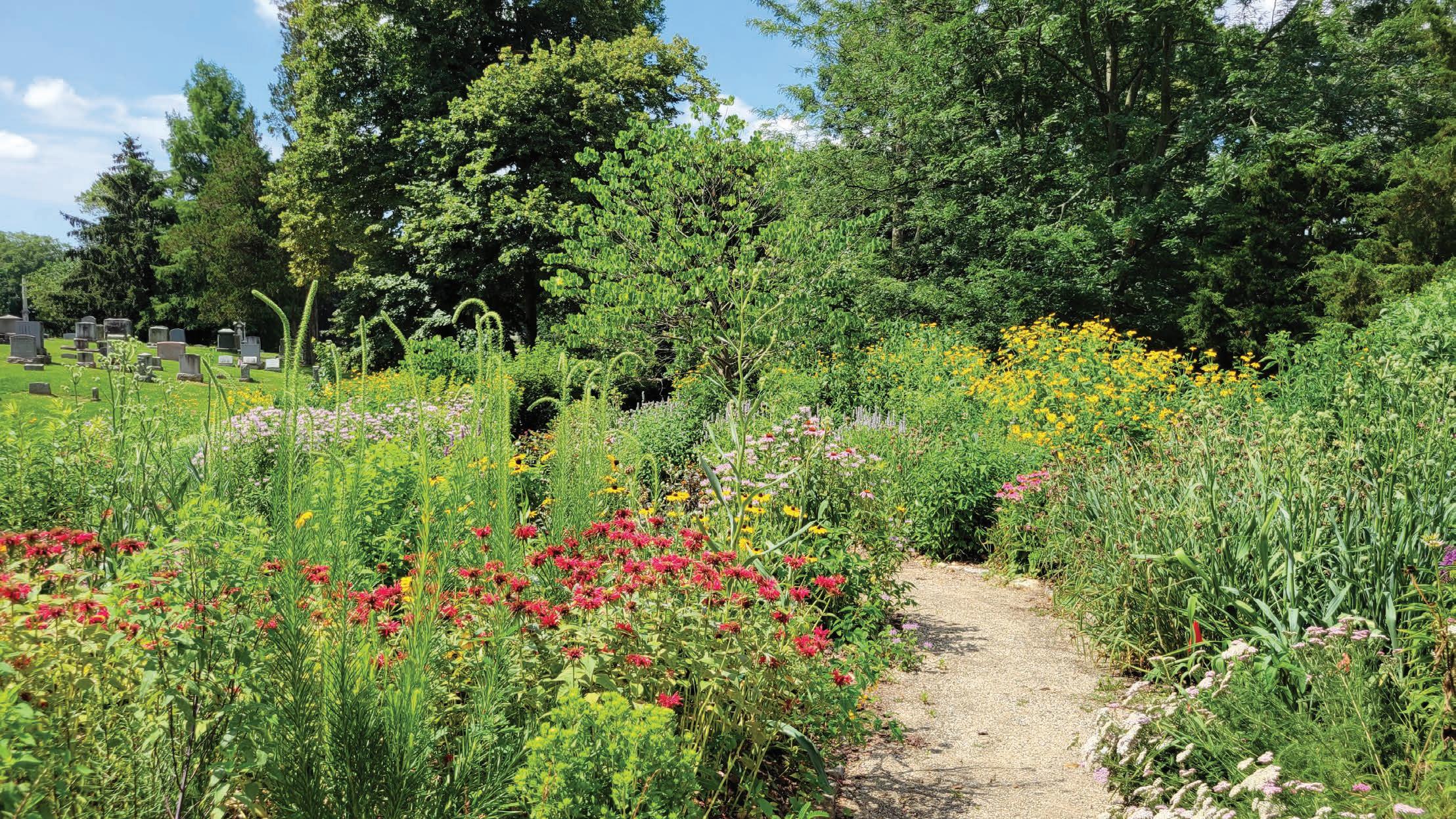
In may, a federal supreme court ruling in the case of Sackett vs. the Environmental Protection Agency reduced federal protections of waterways. At the root of this case is the interpretation of the 1972 Clean Water Act, a federal law that is the backbone of water protections in the United States. The Clean Water Act prohibits the discharge of pollutants into “waters of the United States,” but the definition of “waters of the United States” has been wrestled with for decades.

Prior to the Sackett ruling, the Clean Water Act was interpreted to protect wetlands and ephemeral streams that have seasonal surface waters — the features that make up the headwaters of a river system. The headwaters are where a river is born — in small streams, wetlands and even stormwater drains. These small streams and wetlands provide flood control and habitat to plants and animals and ensure high water quality. Major rivers are fed by everything upstream, and the protection of headwaters is integral to overall river health.
Under the Sackett decision, the court’s interpretation of “waters of the United States” is limited to waterways with an obvious surface connection to permanent water bodies, which will leave many wetlands and ephemeral streams vulnerable to pollution and degradation. This ruling ignores the complexity of water systems, which are also connected underground, and puts the responsibilities on states to ensure clean water for their residents.
Surprisingly, few states have constitutional language establishing the right to a clean environment. But happily, Pennsylvania’s constitution includes the right to “pure water.” The state’s Clean Streams Law protects a broad interpretation of waterways, including wetlands and small ephemeral streams. These protections of waterways have been, and continue to be, more stringent than federal protections.
In practicality, this ruling does not markedly change protections of the Wissahickon Creek or its tributaries. However, water does not observe political boundaries, and the Delaware River (which the Wissahickon Creek flows to) will be affected by this emerging change because it is fed by rivers from three other states.
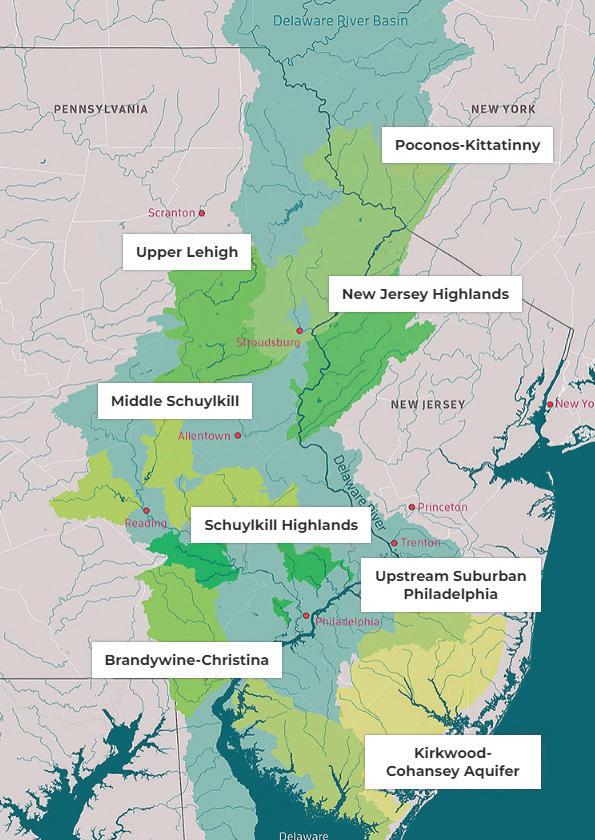
Pennsylvania has strong protections of waterways precisely because community and individual voices engaged in the public process to advocate for waterways long ago. Speaking up consistently in the public process to advocate for clean water is critical to a healthy environment for communities today and in the future. To find resources on this, visit the Pennsylvania Department of Environmental Protection’s Public Participation webpage, which explains our state’s environmental regulatory process and ways to participate in decision-making processes.
Another great resource is River Network’s Clean Water Act Training series. This free training is completed at your own pace and is a nine-part, in-depth dive into the federal Clean Water Act. It explains how to use regulatory tools and your own local knowledge to advocate for local streams and rivers.

14 THE SHUTTLE October 2023 Specializing in green end-of-life services with a variety of eco-friendly products 610.668.9900 laurelhillphl.com Bala Cynwyd | Philadelphia
Courtesy of 4states1source.org
This map of the Delaware River Watershed shows connected waterways crossing state lines.
Courtesy Wissahickon Valley Watershed Association archives. A sign warns people of the dangers of a polluted waterway in Upper Gwynedd, circa 1960s or ‘70s).
Folkshul and Community to Honor Miron’s Many Years of Musical Service
by Jennifer Couzin-Frankel, for the Shuttle
In the early 1990s, art miron started toting his guitar on Sunday mornings to Jewish Children’s Folkshul and Adult Community in Chestnut Hill, filling in as music leader after he and his wife, Trish, had enrolled their young daughter there. He never imagined that 30 years later, he’d still be strumming and singing with children and teens, offering his eclectic mix of folk music and Hebrew and Yiddish tunes. On Oct. 15, Folkshul will celebrate Miron’s tenure with food, toasts, and, of course, music.

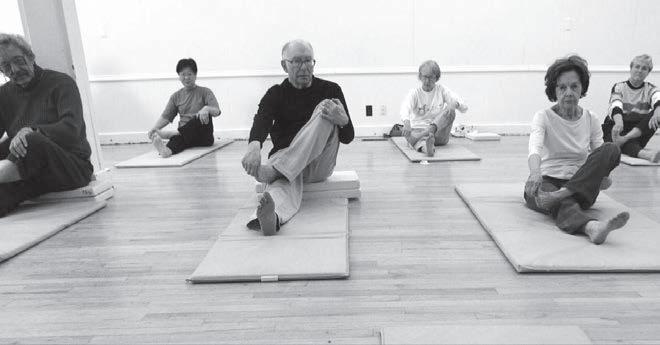
Folkshul, which meets at Springside Chestnut Hill Academy, is a secular cultural Jewish community and Sunday School for families and adults. (More info is available at www.folkshul.org.) Like others, the Mirons were drawn to Folkshul because they wanted their daughter, Jessica, to feel connected to her Jewish roots, but in a secular setting.
The emphasis on social justice and diversity was a bonus. Trish spent 15 years as a teacher there. “It’s unique” said Miron. “There’s not a whole lot” like it.”
Along with weekly visits to classes
from kindergarten through ninth grade, Miron has performed at High Holiday programs and hundreds of bar and bat mitzvahs. Those take the form of independent research projects interspersed with Miron’s guitar playing and speeches from family and friends.
During class time, “he would come in with these big milk crates filled with the old Folkshul song books that were falling apart,” says Rachel Forman-Rubinsky, a Folkshul graduate and former Mt. Airy neighbor of Miron’s. “He’d pretty much do whatever songs we wanted.” Now 33 and a biologist and geneticist in Pittsburgh, she and her brother Avi, also a Folkshul graduate, still sing “Sandwiches,” probably one of Miron’s top hits. (It includes the crowd favorite of collective burping.) Forman-Rubinsky said as a child, “I thought ‘Imagine’ by John Lennon was a Jewish song” because Miron sang it so often.
When asked why he’s stuck around at Folkshul all these years, Miron turns reflective.
“It’s wonderful to sing with the
kids,” he said. “I’m not doing this as performance— I’m doing this as gathering.”
Still, it can be a challenge to coax them to join in, especially the older crowd. “It inspires me to see if I can get them to sing along,” he added.
He’s always interested in the songs the children request. Will they ask for “Blowing in the Wind,” or “Big Rock Candy Mountain?” One of Miron’s Hebrew favorites is “Bashana Haba’a,” which celebrates hope for the coming year.
Miron’s songs and warmth are his gift, according to Beth Margolis-Rupp, executive director of Folkshul. “When alumni come back to visit Folkshul, Art’s songs are part of their collective memories that make them feel part of our community and [lead them to] bring their children to join.”
Miron is also a longtime Weavers Way member and, with a partner who plays electric guitar and sings, has often performed at gatherings for the Co-op’s stores and in the wider community. (“My member number is 187,” he said. “It tells
Art Miron
you I’m old.”) The two don’t have an official band name. but “we sort of call ourselves ‘Bald is Beautiful.’”
Miron’s celebration at Folkshul will be open to the public. To RSVP go to, http://evite.me/RMUtJ6gum8.
is Co-op Month!
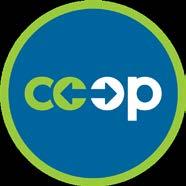

October 2023 THE SHUTTLE 15 Free YOGA classes @Lovett Library Thursdays at 3:15 p.m. Germantown Ave at Sedgwick (upstairs) stretching - balancing - breathing - relaxing Every body is different. Yours is welcome here. Josh Mitteldorf has been teaching yoga in Mt Airy for 40 years.
October
Plant Garlic this Fall for a Flavorful Harvest Next Summer
by Adam Hill, for the Shuttle
Garlic is a beloved and Widely used culinary ingredient known for its pungent flavor and numerous health benefits. It’s also a rewarding and easy plant to grow in your own garden. With a little planning and care, you can cultivate this versatile bulb to produce a bountiful harvest.
Choosing the Right Garlic Variety
There are two main types of garlic: hardneck and softneck. Hardneck garlic varieties are more suited to our climate and offer larger cloves and richer flavors; softneck varieties thrive in milder climates and have a longer shelf life. I usually recommend classic hardneck varieties like Music or German Extra Hardy.
If you really want to geek out on garlic, try a couple of different varieties. True garlic connoisseurs will tell you that each variety is best suited to a specific preparation like sautéing, baking, roasting, etc.
Selecting high-quality garlic cloves is crucial for a successful harvest and to avoid soil-borne diseases. Purchase certified disease-free garlic bulbs from reputable nurseries or seed companies. Avoid using garlic from grocery stores, as these are usually softneck varieties and may be treated with chemicals to prevent sprouting.
Preparing the Planting Area
Garlic thrives in well-draining, fertile soil with a pH between 6.0 and 7.5. Before planting, amend the soil with compost to improve its structure and fertility. Choose a sunny location with at least six to eight hours of direct sunlight per day. Make sure to remove any weeds and debris from the planting area.
Garlic is one of the few crops planted in the fall and harvested the following summer. With climate change, the best planting date for garlic is a moving target. But right around Halloween, or anytime between mid-October and mid-November, is a good bet.
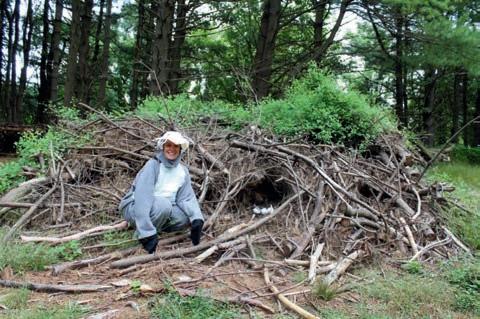
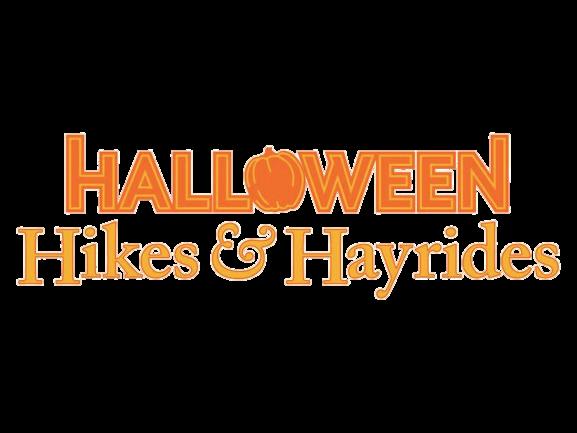

Separate the garlic bulb into individual cloves, leaving the papery skin intact. Plant the cloves pointed end up, about two inches deep and six inches apart in rows spaced six-12 inches apart. Cover the cloves with soil, and apply around two to three inches of an organic mulch like salt hay or shredded leaves to protect them from harsh winter conditions. Pro tip: Orient all the cloves in the same direction so when the plants grow and the leaves fan out, they won’t overlap; this will increase airflow while reducing pest and disease issues.
Watering, Fertilizing and (Yay!)
Harvesting
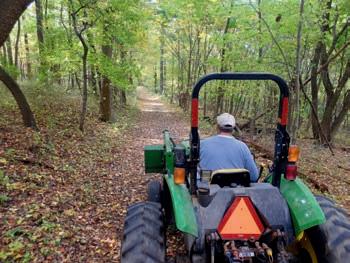
Garlic requires consistent moisture, especially during its early stages of growth. Water the plants regularly but avoid overwatering to prevent rotting. Once the garlic has established its roots, reduce the frequency of watering. If you have healthy soil, fertilizer typically isn’t necessary, but it can be used to support healthy growth.
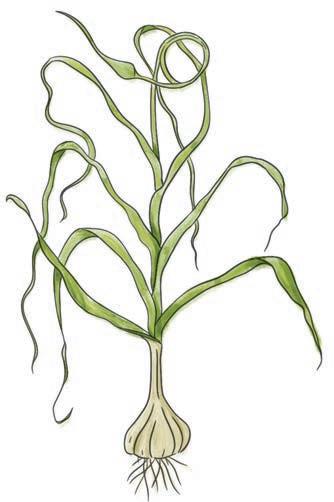
Garlic is generally resistant to pests and diseases, making it an excellent addition to any garden. However, allium leaf miner has invaded our region over the last few years, which can destroy a crop or at least prevent long-term storage. The flying window for the leaf miner lasts six to eight weeks and varies in timing based on the weather. To be safe, you should cover your garlic bed with insect netting from March until mid-May to prevent them from laying eggs on your plants.
In our region, hardneck varieties are usually ready between late June and mid-July. In general, garlic is ready for harvest when the lower leaves turn yellow or
brown. Use a garden fork to gently lift the bulbs from the soil. Be careful not to bruise or damage the bulbs during harvesting.
There is an additional (delicious) step to take when growing hardneck varieties: you must “scape” each plant by removing the flowering head a few weeks before harvest. This allows the plant to focus its energy on producing extra-large heads. Pull the scape out once it has grown above the rest of the plant and formed a loop. The scapes have an amazing garlic flavor and are great for pestos and frittatas or charred on the grill.
Curing and Storing Your Crop
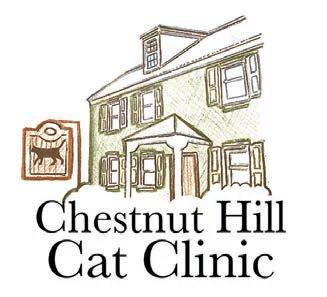
After harvesting, lay the garlic plants in a warm, dry place with good air circulation for about two to three weeks to cure, or bunch them and hang them upside down. Curing allows the outer skin to dry and extends the shelf life of the bulbs. Once the garlic is thoroughly dried, trim the roots and cut the stems about an inch above the bulb. Store the garlic in a cool, dark and dry place with good ventilation.
Growing garlic in your garden can be a gratifying experience, providing you with fresh, flavorful bulbs that keep for months. With proper care and a little patience, you will be rewarded with a bountiful harvest year after year.
Adam Hill is the associate director of community gardens for the Pennsylvania Horticultural Society.


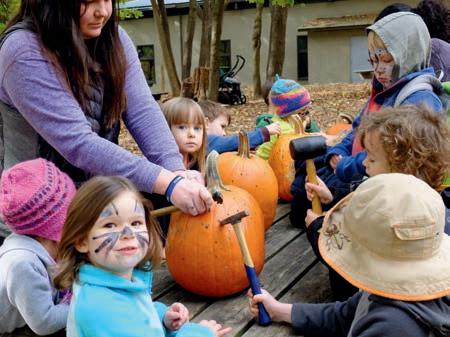


16 THE SHUTTLE October 2023 October 27 & 28 | 5PM - 9PM S’mores Crafts and Games Live Animal Presentations Come join us for: and more! Interior/Exterior Painting 35 Years of Professional Experience Locally owned and operated Schedule your free estimate Visit us online: planetpaintsolutions.com 215.948.3747 Lead Paint Certified Contractor. 215-247-9560 8220 Germantown Avenue www.chestnuthillcatclinic.com Taking care of cats and their people for over 35 years.
All About Eels: Their Sliminess, Mystery and Endangered Status
by Sandra Folzer, Weavers Way Environment Committee

Why Would you ever care about eels? They are not pretty or cuddly; in fact, they are rather sinister looking. They have all the characteristics of a reprehensible monster.
They look like snakes, are slimy and have small eyes and sharp teeth.
But looks aren’t everything. I want you to appreciate these fascinating, critically endangered creatures and understand how they help balance nature.
Eels play an important part in our ecosystem as both predator and prey for many birds, mammals and large fish. They keep rivers and streams clean by transporting mussels who filter out pollutants. Some say if eels disappear, so will the mussels. Japanese studies found a positive correlation between eels and migratory species. Conversely, when there were fewer eels, there were fewer migratory species. They help improve the biodiversity of freshwater ecosystems, where they spend most of their lives.
Eels have been a mystery for millennia, and we still don’t know much about them.
Ancient Egyptians believed eels came to life when the sun warmed the Nile. They were considered holy and were related to the sun god, Atum. Aristotle believed they had no sex and spontaneously arose from the earth. The Romans also believed they were sexless and hence were sanctioned by the Church to be “clean.” Hence, they were popular, and were even used as currency during medieval times.
Searching for Progeneration
In 1777, Carlo Mondini located an eel’s ovaries and demonstrated that they are a kind of fish, but it took almost another century before a male eel was found. As a young researcher in 1876, Sigmund Freud dissected over 400 eels, trying in vain to find male gonads. The seeming absence of male organs led some to believe that eels were hermaphroditic.
In the 19th century, rewards were offered for a male eel. Hundreds of eels from all over Germany were examined but no male was found. What they didn’t realize is that eels acquire their gender when they are about to spawn.
There was a time when scientists didn’t know how to classify eels, since their scales and gills are nearly invisible. Now they are considered fish, since they can breathe underwater, but they can also live several hours out of water by breathing through their skin. Aside from their questionable sex lives and their ability to breathe out of water, eels have a remarkable pattern of development.
The oldest eel whose age can be verified was caught in 1863 by a boy named
Fritz Metzler who named it Putte. When Fritz died in 1929, Putte, then 70, went to a museum where he remained until he died at age 88 in 1948.
Eels transform from eggs to tiny, transparent leaflike larvae to wormlike “glass eels.” Their colors change as they grow larger, and they are known as “elvers” before they become the shape we think of as eels. They grow from one to three meters or more.
Eels begin life drifting in the ocean, then find their way to fresh water, where they live for many years. Most eels are catadromous, meaning they spend most of their lives in freshwater rivers before returning to the sea to spawn.
Schmidt’s Search for the Origin of Eels
Johannes Schmidt left Denmark in 1904 to search for the birthplace of eels. Between 1904 and 1911, he commissioned 23 freighters to search for eel larvae to discover their breeding ground. Again in 1913, he searched the waters from Portugal to Newfoundland to the Caribbean. He found that the eel larvae increased as he traveled west but their size diminished.
Schmidt knew there were two general types of eels, American and European, depending on the areas to which they migrated. American eels develop faster; they become glass eels after a year, while European eels take three years. Schmidt discovered that in the western part of the Atlantic, the two types of eels were mixed, which suggested they shared a birthplace.
In 1921, Schmidt found the smallest eel specimens in the western part of the Atlantic Ocean. He was now convinced, after nearly a 20-year search, that he had found the birthplace of eels: the Sargasso Sea. The Sargasso is a two-million square-mile span of the ocean near Bermuda, the Azores and the West Indies. It takes up two-thirds of the North Atlantic and has been described as a “golden floating rainforest” because of the ocher-colored seaweed which used to blanket its surface. It is a sanctuary for 270 marine species, but ocean currents have trapped so much plastic there that it is now referred to as the North Atlantic Garbage Patch. The negative repercussions on the mating of the eels can only be imagined.
Some of our estimates of the life cycle of eels are still based on Schmidt’s studies. We know that tiny leaflike eels leave the Sargasso Sea and drift toward fresh water. American eel larvae float 1,500 kilometers to reach the North American coast while the European eels
journey more than 5,000 kilometers. They follow the Gulf Stream and other currents to reach rivers and lakes and can be found from Iceland to Morocco.
Japanese eels, unlike the American and European species, spawn in the North Pacific and migrate thousands of kilometers to different parts of Asia. Shortfinned eels also spawn there before traveling to Australia and New Zealand. All transform their size and shape as other eels do.
After they mature, anywhere from five to more than 20 years, eels begin to change their bodies once again. They produce more oil, which is stored in their muscles. Once enough oil is stored, they stop eating and migrate to the center of the Pacific Ocean, near New Caledonia, just as American and European eels migrate to the Sargasso Sea. Their digestive systems shrink, and their gonads enlarge to form eggs or sperm. Their eyes get bigger and their heads more pointed, to help them swim better in the ocean. Once the female lays eggs and the male fertilizes them, the mature eel dies. Scientists’ knowledge is based on observing tiny, leaflike eels leaving spawning areas. According to several sources, including an Aug. 2021 article in Newsweek, one has ever seen eels mate in the wild.
With the support of the Japanese government, researchers there have been able to collect fertilized eggs and track tagged eels to their spawning area in the Pacific Ocean. They learned that eels spawn a few days before the new moon at depths of 150-200 meters, and spawning is triggered in part by temperature changes. It is a mystery how eels navigate. To find their way, they probably integrate different senses, including vision, pressure detection, magneto reception and smell.
A Long-Term Decline in Eel Numbers
Sadly, the European eel is critically endangered; their numbers have declined by 90% since 1970, according to Wikipedia.
All other eels are endangered as well. They have been overfished and face numerous hurdles, from pollution and habitat loss to barriers to migration, like dams. Unlike other marine animals, eels cannot
be farmed easily since they do not reproduce in captivity. As wild young “glass” eels are caught to raise to maturity, their numbers decline.
Factory fish farming is not sustainable because billions of wild fish must be caught to feed the farmed fish. It takes several pounds of ocean fish to produce one pound of farmed fish. Indirectly, dolphins and turtles and other marine life are killed in the process. These farmed fish live in cramped and polluted containers, which then require antibiotics to be administered, so their quality of life is poor.
As with factory farms, we don’t see the pain that these animals endure. But because we don’t see the cruelty doesn’t mean it isn’t happening. In addition, workers who are sometimes slave laborers are forced to remain on boats which don’t dock; they live in deplorable conditions. Some fishing industries practice illegal fishing and are guilty of human trafficking.
Some scientists are predicting our oceans will be without fish by 2048.

While there have been some regulations to discourage the overfishing of eels, these protective regulations are not enough. American eels have declined by more than three orders of magnitude, according to an issue of the Newsletter of the Great Lakes Fishery Commission published earlier this year. The European Union requires member nations to close fisheries for three months during migration season, but there are black market traders who disregard any rules.
One way we can support eels, aside from not eating them in sushi, is to use less plastic. According to a new study in Nature Communications, ocean currents are reaching a tipping point. The Atlantic Meridional Overturning Circulation moves warm water from tropics into the ocean and moves warm water south. Due to ice melt, the AMOC is slowing, causing extreme temperatures in Europe and rapid sea level rise in along the Northeast Coast of the United States. This will interfere with the eels’ migration.
By protecting biodiversity via the eels, we are also improving our own lives. It’s easy to forget day to day, but all life is connected, and the choices we make have consequences.
October 2023 THE SHUTTLE 17
Environment Committee Hansell Contractors, Inc. Builders - Historical Restoration - Fine Carpentry Energy Conservation - Architectural Design Services HansellContractors.com Office: 215-277-1540 Fax: 215-277-1390 Lic.# PA022176 EPA Lead Certified
(Continued from previous page) beling and advertising. But trade show promoters can say anything. Meanwhile, I’m looking forward to finding Utopia in Savannah!
suggestions and responses:
s: “Hey Norman, I’m sorry if you’ve already been asked this a hundred times and you’ve probably posted something about it in the Shuttle that I missed. Has Better Than Bouillon discontinued their No-Chicken Base? I look for it every time I’m in the store.”
r: (Keith, MA) We have discontinued it, but it can be preordered. As a matter of fact, I just ordered two cases for a shopper. (Norman) It wasn’t in the Shuttle, so you didn’t miss it. It was discontinued due to slow sales, but it comes in a case of six if you want to order a case. There are organic and nonorganic versions, so if you want to order a case, email MApreorder@weaversway. coop (assuming you want to pick up in Mt. Airy). The organic is about $1.75 a jar more than the nonorganic.
s: “Do you sell products with Apeel coating? Are we buying any of those products? Can you flag items that have it so we can at least inform shoppers or decide as an organization how to handle this and what to tell shoppers?”
r: (Norman) Apeel is a trademarked coating created to keep some produce items from drying out and spoiling faster than they would without the coating. It is mainly used on avocados, citrus and cucumbers. It is plant based, and thus considered automatically “good” these days. Apeel has been in the news lately, mainly due to confusion with a surface cleaning product from the UK that has the same name.
This is an example of Twitter/X/Whatever gone wrong. People conflate the products, and some write that Bill Gates is out to influence our lives (I am not making this up). Our main produce supplier, Four Seasons, said they don’t sell anything with Apeel on it. However, Apeel is only one brand of coating. Many pro-
Does "Local" Always Mean "Just?"
driven and possibly a social indicator of food quality. If a product is local, then it is easy to assume that it was produced ethically and sustainably. This phenomenon of assuming local companies are unconventional, sustainable and just is referred to as the “local trap.” It is easy to fall into it at farmers markets, community grocery stores and even when visiting local farms. But until we see behind the scenes of the companies we support, we can’t truly know their commitments to sustainability or workers’ rights.
Calling out injustice that takes place elsewhere is easier than taking accountability for the injustice within our own communities. It takes more self-reflection and action to grapple with, but we also have more at stake, which makes the fight for farmworker labor rights even more of a shared fight.
Exploitation of Farm Workers Continues
Recently, I spoke to a friend who took a trip to the New Jersey Pine Barrens, an area of the state that is known for its blueberry and cranberry farms. While driving through the fields, he was surprised to see that many of these large-scale farms rely on migrant labor to operate. Many of these laborers start in Florida and move north along the Eastern Seaboard, following the seasons along with the warm weather.
Being from South Jersey, I grew up seeing “Jersey Fresh” labels slapped across pints of blueberries, bushels of peaches and crates of tomatoes. The Jersey Fresh label was created in 1984, when local eating was on the rise. On their website, Jersey Fresh states that their label indicates that a fruit or vegetable was grown in the Garden State, along with some statements that buying local tastes better, is better for the environment and supports family farms. However, nothing points to other standards of growing practices, such as pesticide and herbicide use or labor standards.
duce items have an applied coating for the same purpose and have for decades. Anytime you see a shiny coating on citrus, tomatoes, cucumbers, peppers, apples, even peaches you can pretty much bet a coating has been applied, typically a form of edible wax that’s been approved by the FDA. This is also true of organic produce (although the coating has to meet organic standards). Unfortunately, there is no rule requiring labeling of these coatings at the consumer level.
s: “I enjoy reading your columns in the Shuttle; I like an organization that doesn’t take itself too seriously. I have a question/complaint. Recently, I visited the Chestnut Hill store to purchase a half gallon of 1% organic milk. I found that despite there being a vast array of milk and milk-like products there did not appear to be any half gallons of 1% organic milk. Oddly enough, there did not seem to be any systemic run on milk generally. In fact, all the shelves were fully stocked with the conspicuous exception of the empty slot where
the 1% half gallons go. This is not the first time this has happened. In fact, it has become a common occurrence. Is there some shortage of this variety or am I imagining things?
r: (Norman) Nice to hear that you enjoy reading the Shuttle. According to Len Mears, our grocery manager in Chestnut Hill, we haven’t discontinued the 1% half gallons. Either our supplier was out of stock (which did happen a couple times recently) or the shelf ran low and a staffer didn’t notice it to restock it. We’re going to give it two display rows to help prevent this in the future. If you do see that a regular item’s slot is empty, please let a staffer know. We’ll get it restocked if we have the backstock.
s: “I heard electric cars are becoming a thing due to being more sustainable and all. I don’t know if this is true or not. I’ve been wondering whether if, given the amount of composting and cardboard recycling I see going on, could we develop a car engine that could run on compost and cardboard?”
r: (Norman) Absolutely! We’ve been experimenting with vegetable waste, mainly peels, stems and pistachio shells. It turns out that if you give peels, stems and leaves a few weeks to dry out, they will burn, especially with the aid of shredded cardboard in the mix. Our research and development lab is hard at work turning these combustible materials into pellets suitable for burning in an engine, kind of like coal in a steam locomotive.
Once the engine is developed, we’ll see about retrofit kits for cars, so members can drive a non-fossil fuel or lithium battery-based car. While it might still pollute a little due to the combustion, at least the neighborhood will smell like a campfire, which most people find pleasant.
(Continued from Page 1)
Before they shut down in 2019, workers at Merlino Brothers Farm in Hammonton, NJ, would sleep in pole barns packed with bunk beds accommodating 50100 workers. A Philadelphia Inquirer article revealed that there was no running water, working toilets or fire sprinklers in the bunkhouse, and the state’s Department of Environmental Protection found their septic system to be faulty and their water contaminated.
These violations reveal a deeper problem at farms with migrant workers in the self-proclaimed Blueberry Capital of the World and beyond. We don’t think of this kind of workplace existing in the United States. But the origins of the American labor movement were incredibly xenophobic, and that legacy carries on through the fabric of U.S. law and policy. State and federal governments are quick to turn a blind eye to labor exploitation when those who are being exploited are immigrants. The law does not serve to protect these communities.
Many immigrant farmworkers fall under the H-2A category, meaning they are not naturalized citizens and come to the United States on a foreign work visa. Farm owners utilize H-2A contracts to bring in seasonal employees from outside the country when they can prove that they cannot find domestic workers. Every state has an Adverse Wage Rate, which indicates how much H-2A workers are to be paid. In New Jersey, this rate is $16.55/ hour. But farm owners can take advantage of migrant workers’ employment-based residency and illegally underpay these workers.
Many farmworkers in the world of industrial agriculture are paid a piece rate, meaning that they are paid by their productivity. Employees get paid a small amount for each pound of tomatoes, pint of blueberries, etc., that they pick. Many workers find out at some point that their H-2A contracts were filed illegally; the papers indicate that they work in a different state, often states with much lower AWRs.
When an employee's legal status is tied to their employment, it is hard for workers to have any leverage to push back against management. Any type of adversarial action will likely result in termination, and if a worker gets fired, they must leave the country immediately.
The Ethos of Farming
As hard as this work is, it is a privilege to come to farming from a place of interest, desire and wonder, rather than necessity. The land we all occupy is land that has been stolen, seized and ravaged. It is land that needs healing and reckoning. Farming is an intensely spiritual vocation. To farm is to be in community with the land, the bugs, the plants and the people. But it is also a political vocation and an immense responsibility. Landowners and farm owners hold a lot of power, and their choices affect diets, lifestyles and ecologies.
We can hold our farms to better standards, but we can also begin to dream of futures where food is not a commodity. At the root of it all, capitalism begets exploitation. Cooperatives are a step away from capitalism and toward commonality, but they’re not there yet. Some things to consider: the gift economy, wealth redistribution, land redistribution, power redistribution. We can talk all day about the labels we see on our food and how we love to buy organic, local and fair trade. But how do we go deeper than that? How do we begin to see good food as a right for all rather than a privilege for some?
Please consider supporting CATA Farmworkers. Founded in 1979, this South Jersey-based organization organizes to support the immigrant farmworker community by working to secure workplace health and safety standards, fair wages, immigrant rights and food justice. Find out more at www.catafarmworkers.org.
October 2023 THE SHUTTLE 19
“ “
This is the beauty of marketing claims — you can say almost anything.
The Backyard Beet Five Fall Garden Projects to Work On (Besides Planting Lettuce)
by Chris Mattingly, for the Shuttle
For many, fall gardening season is a Welcome slowdown after the busy end of summer. Even so, you can still take advantage of your edible garden. It’s a great time to take stock and prepare for next year. Whether you’re still growing crops or amending your backyard setup, don’t miss the chance to improve your garden this season.
Here are five things to do with your fall garden after planting cool-weather crops:
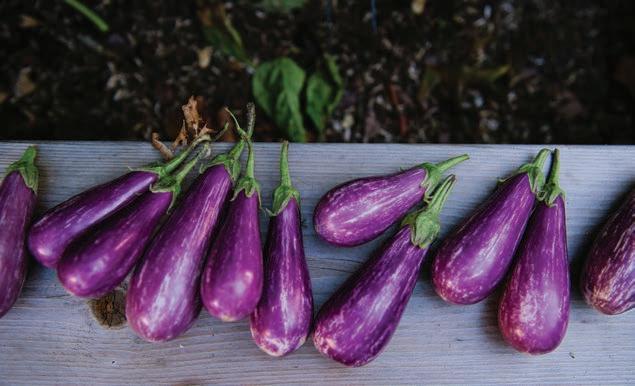
1. Harvest Continuously
Now that you’ve (hopefully!) planted your favorite coolweather crops, don’t forget to reap what you’ve sown. Harvest baby greens and herbs frequently to encourage ongoing production. This “cut and come again” method will allow you to make the most of your fall garden’s potential while enjoying fresh produce from your own backyard.
2. Preserve Your Harvest for Winter

Preserving summer vegetables and herbs is a great way to enjoy your backyard harvest after summer ends, and food preservation doesn’t have to be complicated or intimidating. If canning isn’t for you, try freezer-friendly recipes like homemade tomato paste or basil pesto that can be made in an ice cube tray and stored all winter long. Dice and freeze vegetables like bell peppers and onions for a quick and healthy addition to any savory dish.
You can dry perennial herbs like rosemary, sage and thyme at home by hanging them in a cool, dark, and dry place for two to three weeks. Store and use them in your favorite recipes. Of course, classic canning recipes like tomato sauce, salsa and pickles also make quick work of large end-of-summer harvests. So experiment in the kitchen this fall! You’re sure to find a new preservation method that helps you capture your favorite flavors of summer and enjoy them all winter long.
3. Prepare Shallots and Garlic
Garlic and shallots are typically planted in October or November before the ground freezes. This allows the plants to develop a strong root system and survive the winter. Once planted, add a layer of mulch over them to protect against cold temperatures and keep the soil moist. This form of fall gardening requires a little patience and planning; the mature plants won’t be ready for harvest until early summer. But after cooking with homegrown garlic, you won't hesitate to grow it again!
Adding a layer of mulch around your plants helps regulate moisture levels and protect plants from cold winter temperatures. Perennial trees, shrubs and berry bushes particularly benefit from mulching because as the organic material breaks down over time, it will return important nutrients to the soil and feed the plants beneath it.
These showcase tender eggplant, ripe tomatoes and fresh basil. When layered with creamy mozzarella, they create a fresh and creative twist on the classic Caprese salad.
Drizzled with balsamic glaze and a sprinkle of salt and pepper, they offer a delightful combination of tastes and textures.
Ingredients:
For the Eggplant Stacks:
• 2 ripe tomatoes
• 1 8 oz. ball fresh mozzarella
• 6-8 leaves fresh basil
1 Tbs. olive oil (for skillet)
6 eggplant slices (1/4" thick)
• 1/4 cup flour
• 1 egg (lightly beaten)
• 1/2 cup panko breadcrumbs
Simple Dressing
• 2 Tbs. olive oil
• 1 Tbs. balsamic vinegar
• Salt and freshly ground pepper, to taste
Mulch also suppresses weeds and creates a unified aesthetic between different garden areas, which keeps your garden neat with less work!
5. Feed Your Soil
Healthy soil is vital to the success of any annual or perennial garden. After a full summer gardening season, it’s a good idea to boost your soil’s nutritional content with natural amendments like organic compost, mulch or fertilizers. Take care to amend the soil where you planted nightshade crops like tomatoes, peppers and eggplants, which feed heavily on soil nutrients every year. You can also amend soil in the spring, but acting now will put you one step closer to a successful garden next year.
The fall gardening season offers a welcome period of reflection and ample opportunities to maximize your edible garden. You’ll thank yourself next spring for preparing for a successful gardening journey this fall.
Instructions:
Slice tomatoes and mozzarella about ¼ inch thick. Rinse and pat basil dry (you can keep it whole or tear into smaller pieces). Set aside.
Preheat a large skillet to medium heat and add a tablespoon of olive oil. Coat eggplant slices lightly in flour, then egg (shaking off excess), and then panko, all in separate dishes. Once the skillet is hot, add eggplant slices and fry, in batches, about three minutes per side until golden brown. Remove to a paper towel-lined plate.
Combine dressing ingredients in a small bowl and whisk until well combined. Taste and adjust seasonings as needed.
On serving plates, build stacks by alternating tomato, mozzarella, eggplant and basil. Repeat until you have two equal-sized stacks. Drizzle with dressing. Enjoy!
Note: This recipe is from thecomfortofcooking.com.
20 THE SHUTTLE October 2023 @pmacraftshow Scan code to purchase tickets or visit pmacraftshow.org
November 3-5 Preview Party November 2 Pennsylvania Convention Center A show and sale of contemporary craft and design.
Karen Morris Saint Paul, MN Fiber Wearable
4. Mulch and Protect
CRISPY EGGPLANT CAPRESE STACKS
Artists in Our Aisles
Gari Weilbacher
My art is based on the gratitude I feel in releasing perfection, my commitment to reuse and my acute awareness of the world we live in. Almost all of the materials are reused and sourced via decades of collecting vintage hankies and ‘70s linens and not knowing why. I use fabric from Buy Nothing groups, old clothing, my daughter and the Resource Exchange. Some textiles belonged to my mother, who was the original textile artist in my life. She taught me the idea of freedom in creating. I dedicate my practice to her memory.
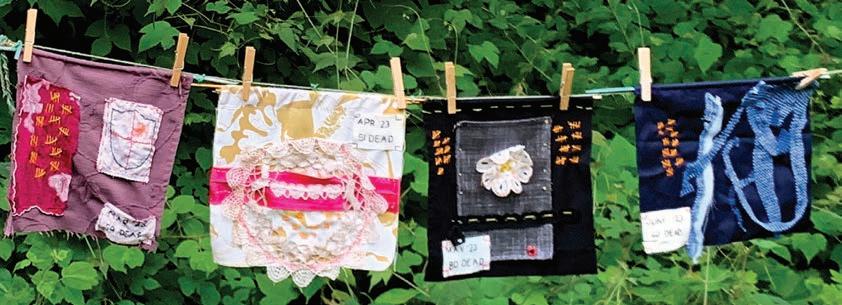
I was excited to take online classes out of the UK with master textile artisans. A thread bowl was one of the projects taught, and each one I make delights me! These are for sale and for commission in many different colors and sizes. No two are alike. You can read more about my textile art at www.wildbrookcoaching. com/textile/activistart
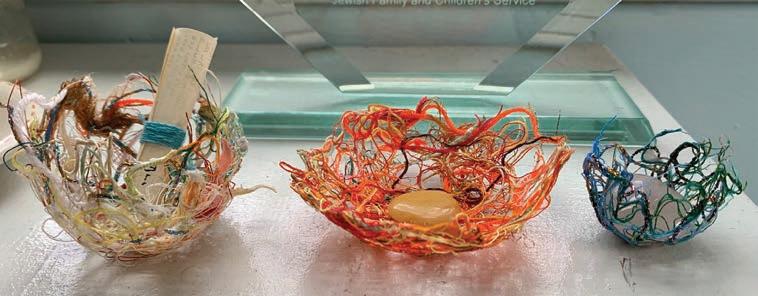
Each month, I also make a flag depicting the horror of souls lost to violence in that month.
I am a business and balance coach, and I consider playing in art a secret hack to getting unstuck. It’s a way to stop the endless spinning that entrepreneurs or those launching new projects often experience.
SUBMISSIONS NEEDED
We want to feature your art in the Shuttle! Please submit the following to Richard Metz (thembones2@hotmail.com):
• Two 4” x 6” high-resolution images (300 dpi)
• A short statement about the work
If Only
• A short bio
• A headshot
• A link to a website if you have one
Weavers Words
Oh, all the things he could have done... If only he had tried. He vowed to start tomorrow...
Then, he up and died.
COVID-19 brought a time of isolation and thought. I found myself walking quietly in my neighborhood and pausing to rest at the end of my walk. I sat and reflected on the nature I saw. What I discovered was how unified plants and insects and people are. We all need water, we all need
—Frank Hollick
Our Revised Submission Guidelines:
1. Original poems must be of a reasonable length. Lengthy poems that are the subject of a reflection will be excerpted.
2. The Shuttle editor has the final say as to whether a poem or reflection is suitable for publication.
3. The number of poems or reflections in an issue is determined by the amount of space available.
4. Members and nonmembers are welcome to submit.
5. Email your submissions to editor@ weaversway.coop and put “Poetry submission (or reflection) for Shuttle” in the subject line.
food, we all need clean air. It became apparent to me that I was more like a tree or grasshopper than an isolated being.
At age 85, I had never written a poem in my life, but I felt compelled to speak of the joy and beauty that stood before me.

The Silenced Grasshopper
I thought of you a leaf of green Upon my rake many leaves did fall Your green leaf body stood out Amongst them all
Within the rust, orange, and fuchsia crowd Your green leaf body stood out amongst them all
I thought your green body a leaf That had not yet Responded to autumn’s call…
Your green leaf body stood out amongst Them all
Yet at a closer look I did discern — Mighty legs of strength, though thin And frail…
Veins of green, antennae as fine as A single human hair
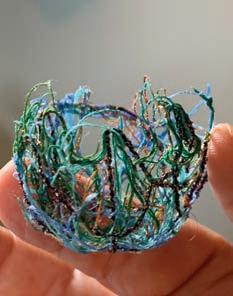
Eyes to explore and a mouth to feed Your green leaf body stood out amongst Them all
And now your green leaf body has Come to rest
Quiet is your mouth to feed no more
Antennae once so swiftly moving now No more shall wander
Eyes opaque no more to see Your green leaf body lies silently
No more to be
—Sandra C. Lewis
October 2023 THE SHUTTLE 21
Results From the Dairy Survey
A big thank you from The Plastics Reduction Task Force to the 230-plus members who filled out our dairy survey. We wrote the six-question survey to assess members’ wishes about purchasing dairy products in reusable/ returnable glass bottles. We were hoping that members would welcome a move to circular dairy packaging, and those who answered our questions overwhelmingly do.
Imagining a World Without Waste Plastic Reduction Task Force
To the main question, “Do you prefer purchasing dairy in returnable deposit glass bottles?” over 84% of respondents said “yes” with an additional 13% indicating “maybe;” just 3.2% said “no.” Thanks to your answers, we were able to collect data and learn what type of dairy you would like to see in glass bottles, as well as what sizes you would like to see and why you would or would not prefer glass.
We recently shared the survey results with Weavers Way’s new Sustainability Coordinator, Danielle Mitchell. We all found the results to be informative and agreed to pursue options to offer some of the items requested in the survey in glass. The survey was a great way to gather information on purchasing practices from members, and we are excited to be able to act on the results. Stay tuned for new dairy offerings in returnable glass bottles.
—Hilary Zankel
Hot Takes From the CRP Program
We have some additional exciting news. We have added our first CRP item in body care: Dead Sea Mineral Bath Salts. You can find them Next Door in Chestnut Hill. They will be on your left side on a lower shelf in the front of the store. The jars are prepacked for you and ready to go. A $2 deposit will be added to your purchase, and when you return the jar, your deposit will be refunded to you. We are hoping that the other wellness locations will also start making this available.
We are also doing testing and conducting research on set weights. Right now, some CRP items are based on weight and others are set weight. We are hoping to possibly move to set weights for CRP items, which impacts labeling. Also, we are working hard to try to move toward a dissolvable label for all CRP items. We aren’t there yet, but when we get there, the CRP process will omit that label, which now is a landfill item. That will make the process 100% waste free. More to come on weight method and labeling.
PRTF Open Forum Discusses Plastic Reduction at CSA
On Aug. 21, the Plastic Reduction Task Force held its first Open Forum event. This was an opportunity for new Co-op members to engage with ongoing PRTF members, learn about the plastic reduction efforts we are working on, provide new ideas and ask questions. We had eight individuals join us for this portion of our meeting and had a great conversation around reducing the Coop's plastic footprint at its Henry Got Crops CSA table. As a result of this conversation, we've already connected with Co-op and market staff and are moving forward with potential solutions.
Are you eager to see less plastic in your grocery experience? Consider joining us for our next Open Forum event on Nov. 20 at 8 p.m. (on Zoom). If you have questions or want to sign up, reach out to us at prtf@weaversway.coop.
—Kim
Paymaster
Philly Talks Trash Publishes Third Quarterly Newsletter
The PRTF and Philadelphia Neighborhood Networks published our third newsletter in September. The Philly Talks Trash quarterly newsletters are full of useful information concerning plastics and waste.

Our June edition coincided with the Canadian wildfires and the smoke they were sending over our region, as does this one, since they are still burning. But so are many other fires and floods — too many to mention. We know the scientific consensus is that these are all made worse by global warming, which is caused by our reliance on and overuse of fossil fuels. What many do not know is that not all this fuel is used to warm and cool buildings and fuel cars. According to the Rocky Mountain Institute, about 12% of global oil production each year is used to create plastics, which means we are sacrificing a livable earth to use plastic packaging to briefly hold products.
We are about two and a half years into our Container Refund Program, and Weavers Way shoppers have chosen returnable options almost 18,000 times. I first want to thank everyone who has sought out the reusable/refundable/returnable items. Choosing them keeps single-use plastics from entering the waste stream. With recycling markets so unstable and so many of our recyclables being incinerated, this method of shopping is the safer bet.
ECHO never needs to decommission containers unless the glass is broken or the clasps are damaged. If you happen to break your container, please do not return it for your deposit. We also greatly appreciate it when folks do not write on or stick stickers on their containers. If you have purchased a CRP container, we ask that you please return it because it helps the Co-op keep our stock in circulation.
If you want to have access to a permanent container that you reuse and want to sticker and write on, please utilize the jar library. Those containers can be kept in perpetuity. But the CRP containers are meant to be circulated so you can get your deposit return for them and keep them in rotation. So please return them because our return rate has dropped from 74% to 64%.
Recently, we made almost all deli CRP items available in glass, and we have added more items to the deli like mozzarella, ciliegine and French feta. If you would like one of these items packed in a CRP container at one of our delis, please request it so the department knows that customers favor these items. In general, Weavers Way wants to hear from you if you want additional items packed in reusables. The Co-op is owned by its members, and members can use their voice to help advocate for more sustainable actions. That’s what sets us apart from Fresh Market, Giant, Acme or any other chain.
Again, thank you to everyone who consistently chooses to reuse and continues to support the Container Refund Program. We are collectively keeping a boatload of plastic from negatively impacting our planet.
— Alisa Shargorodsky, ECHO Systems
As we wrote in earlier newsletters, we need to drastically cut our dependence on single-use plastics, and we can all play an important role in achieving that end. Our newsletters highlight the politics of waste from the local to the international level, list meetings and events happening locally, and provide zero-waste resources and ideas for cutting our individual waste footprints.
Last month, we published a terrific article on what happens to our glass after we put it in our recycling bins. Philly’s own Remark Glass and Bottle Underground also shared solutions to the current broken system. Both detailed how they are addressing the problem and turning used glass into a valuable, beautiful and circular commodity.
Scan the QR code to subscribe to the newsletter.
—Hilary Zankel
WEAVERS WAY ENDS
Weavers Way Cooperative Association exists to provide commercial and community services for the greater good of its members and community, to champion the cooperative model and to strengthen the local economy.
END 1 There will be a thriving and sustainable local economy providing meaningful jobs, goods and services to our members and the community.
END 2 Our community will have access to high quality, reasonably priced food, with an emphasis on local, minimally processed and ethically produced goods.
AS A RESULT OF ALL WE DO:
END 3 There will be active collaborative relationships with a wide variety of organizations in the community to achieve common goals.
END 4 Members and shoppers will be informed about cooperative principles and values; relevant environmental, food and consumer issues; and the Co-op’s long-term vision.
END 5 Members and shoppers will actively participate in the life of the Co-op and community.
END 6 The local environment will be protected and restored.
END 7 Weavers Way will have a welcoming culture that values diversity, inclusiveness, and respect.
22 THE SHUTTLE October 2023
CONTAINER RETURN PROGRAM TOTAL SOLD TOTAL RETURNED RATE OF RETURN 19,375 12, 419 64% Totals by Store: Ambler = 7,700 Chestnut Hill = 6,062 Mt. Airy = 5,613 Cumulative Total (as of Sept. 23, 2023)
henry got crops
HOURS
Tues & Fri N oo N -7 Pm SAT 10 am-2 Pm
Open until Dec, 19, 2023
Reopens March 14, 2024
Extended hours for Thanksgiving!

Open: Monday thru Wednesday 11/20-11/22, 12-7pm
Thursday & Friday 11/23-11/24
HOW TO REACH US Weavers Way Board
The Weavers Way Board of Directors represents members’ interests in the operation of the stores and the broader vision of the Co-op.
The Board’s regular monthly meeting is held on the first Tuesday of the month. Meetings are currently taking place online until further notice. Check the Co-op’s Calendar of Events for the date of the next meeting.
For more information about Board governance and policies, visit www.weaversway.coop/board. Board members’ email addresses are at www.weaversway.coop/board-directors, or contact the Board Administrator at boardadmin@ weaversway.coop or 215-843-2350, ext. 118.
2023-2024 Weavers Way Board of Directors
President: Cheryl Croxton
Vice President: Joshua Bloom
Treasurer: Gail McFadden-Roberts
Secretary: Jason Henschen
At-Large: Hillary Baum, Kristin Haskins-Simms, Benjamin Bartley, Michael Hogan, DeJaniera B. Little, Kacy Manahon, Esther Wyss-Flamm.
The Shuttle
Editor: Karen Plourde editor@weaversway.coop, 215-843-2350, ext. 135

Art Director: Annette Aloe
annette@weaversway.coop, 215-843-2350, ext. 130
Advertising Coordinator: Karen Plourde advertising@weaversway.coop, 215-843-2350, ext. 135

Proofreaders this issue: Vivian Doskow, Janet Etzi, Pam Ozaroff, Cheryl Torsney
Contributors this issue: Hilary Baum, Brigitte Shackerman, Kirsten Bernal, Kieran McCourt, Karen Palmer, Nima Koliwad, Marie Clark, Nancy Peter, Michael Hogan, Annabel Grote, Maryann Helferty, Jon Roesser, Rosa Lewis, Ruffian Tittmann, Mark Smith, Lee Bowman Gannon, Erin Landis, Jennifer Couzin-Frankel, Adam Hill, Sandy Folzer, Norman Weiss, Chris Mattingly, Hilary Zankel, Alisa Shargorodsky, Kim Paymaster, Alli Katz.
Admin 215-843-2350
General Manager Jon Roesser, ext. 131 jroesser@weaversway.coop
Finance Director Earl Pearson, ext. 105 epearson@weaversway.coop
Purchasing Director Norman Weiss, ext. 133 normanb@weaversway.coop
HR Director Lauren Castro, ext. 132 hr@weaversway.coop
IT Director David Chaplin-Loebell, ext. 127 IT@weaversway.coop
Membership Manager Kirsten Bernal, ext. 119 member@weaversway.coop
Retail Director
Jess Beer, ext. 121 jbeer@weaversway.coop
Comm. Programs Coordinator Nima Koliwad nkoliwad@weaversway.coop
Farm Manager Alessandro Ascherio, ext. 325 farmer@weaversway.coop
Facilities Manager Doug Keener, ext. 128 dkeener@weaversway.coop
Admin (Ambler) 215-302-5550
Development Director Kathleen Casey kcasey@weaversway.coop
Marketing Coordinator Mills Harasta. ext. 151 mharasta@weaversway.coop
Executive Chef Bonnie Shuman, ext. 374 bonnie@weaversway.coop
Ambler 217 E. Butler Ave. 8 a.m.-8 p.m. 215-302-5550
Store Manager Heather Wigley, ext. 300 hcarb@weaversway.coop
Assistant Store Manager Matt Hart, ext. 379 matt@weaversway.coop
Grocery
Nancy Timmons Melley, ext. 373 nmelley@weaversway.coop
Assistant Grocery Manager Ken Kolasinski, ext. 380 kkolasinski@weaversway.coop
Front End Manager Hillary Bond, ext. 375 hbond@weaversway.coop
Produce Mira Kilpatrick, ext. 377 mkilpatrick@weaversway.coop
Prepared Foods
Alisa Consorto, ext. 374 aconsorto@weaversway.coop
Meat, Poultry and Seafood Mike Lawrence, ext. 361 mlawrence@weaversway.coop
Floral Buyer
Mira Kilpatrick, ext. 377 mkilpatrick@weaversway.coop
Bulk Buyer Ross Beauchamp, ext. 380 rbeauchamp@weaversway.coop
Bakery
Chris Mason, ext.376 cmason@weaversway.coop
Deli Karen Gemmell, ext. 359 kgemmell@weaversway.coop
Wellness Karen Palmer, ext. 350 kpalmer@weaversway.coop
Chestnut Hill 8424
Store Manager Ann Marie Arment, ext. 215 aarment@weaversway.coop
Front End Manager Sherne Williams, ext. 215 swilliams@weaversway.coop
Grocery Len Mears, ext. 217 lmears@weaversway.coop
Assistant Grocery Manager Kriss Walker, ext. 217 kwalker@weaversway.coop
Produce Mike Sarver, ext. 211 msarver @weaversway.coop
Prepared Foods Ty Moore, ext. 218 tmoore@weaversway.coop
Meat, Poultry and Seafood Ron Moore, ext. 205 rmoore@weaversway.coop
Bakery Kim Hopson, ext. 217 khopson@weaversway.coop
Bulk John Reimers, ext. 217 jreimers@weaversway.coop
Next Door 8426 Germantown Ave. 9 a.m.-8 p.m. 215-866-9150, ext. 220/221
Wellness Manager Nicolette Giannantonio, ext. 221 ngiannantonio@weaversway.coop
Catering: cateringMA@weaversway.coop, cateringAB@weaversway.coop, cateringCH@weaversway.coop
Preorders: MApreorder@weaversway.coop, CHpreorder@weaversway.coop, ABpreorder@weaversway.coop
Mt. Airy 559 Carpenter Lane 8 a.m.-8 p.m. 215-843-2350
Store Manager Rick Spalek, ext. 101 rick@weaversway.coop
Assistant Store Manager James Mitchell jmitchellt@weaversway.coop
Grocery
Keith Souder, ext. 140 ksouder@weaversway.coop
Produce Shan Wichmann, ext. 107 swichmann@weaversway.coop
Deli Sebastian Agudelo, ext. 134 sagudelo@weaversway.coop
Prepared Foods John McAliley, ext. 102 jmcaliley@weaversway.coop
Meat and Seafood Mike Lawrence, ext. 104 mlawrence@weaversway.coop
Bulk Juli Cardamone, ext. 142 jcardamone@weaversway.coop
Bakery Andrew Joyce, ext. 305 Andrewemjoyce@weaversway.coop
Floral Buyer Ginger Arthur, ext. 317 floral@weaversway.coop
Across the Way
608 - 610 Carpenter Lane 8 a.m.-8 p.m. 215-843-2350, ext. 6
Wellness Manager
Sarah Risinger, ext. 114 srisinger@weaversway.coop
Pet Department Manager Anton Goldschneider, ext. 276 petstore@weaversway.coop
October 2023 THE SHUTTLE 23 DID YOU KNOW? You can read the Shuttle online. The Shuttle www.weaversway.coop/shuttle-online Become a Member Want to play a role in shaping your grocery store? Just complete a membership form in any store or online, make an equity investment, and you’re good to go! We ask new members to attend an orientation meeting to learn about our cooperative model. You’ll receive two hours of work credit for attending. We look forward to meeting you! NEW MEMBER ORIENTATION Tuesday, Oct. 24, 6:30-8 p.m. Virtual To register visit: www.weaversway.coop/events
Germantown Ave. 8 a.m.-8 p.m. 215-866-9150
ww w.weaversway.coop contact@weaversway.coop
What & Who’s
What’s
Who at Weavers Way
Advertise in the Shuttle Affordable and Effective advertising@weaversway.coop
Grown
Locally
llustration by Alli Katz
Closed:
7095 HENRY AVE. AT SAUL HIGH SCHOOL EBT • FMNP • PHILLY FOOD BUCKS ACCEPTED
Celebrate our 50th by helping us sign up 500 new members.
Join Weavers Way during our Member Drive to receive a reusable Co-op grocery bag and an entry into our local products raffle.
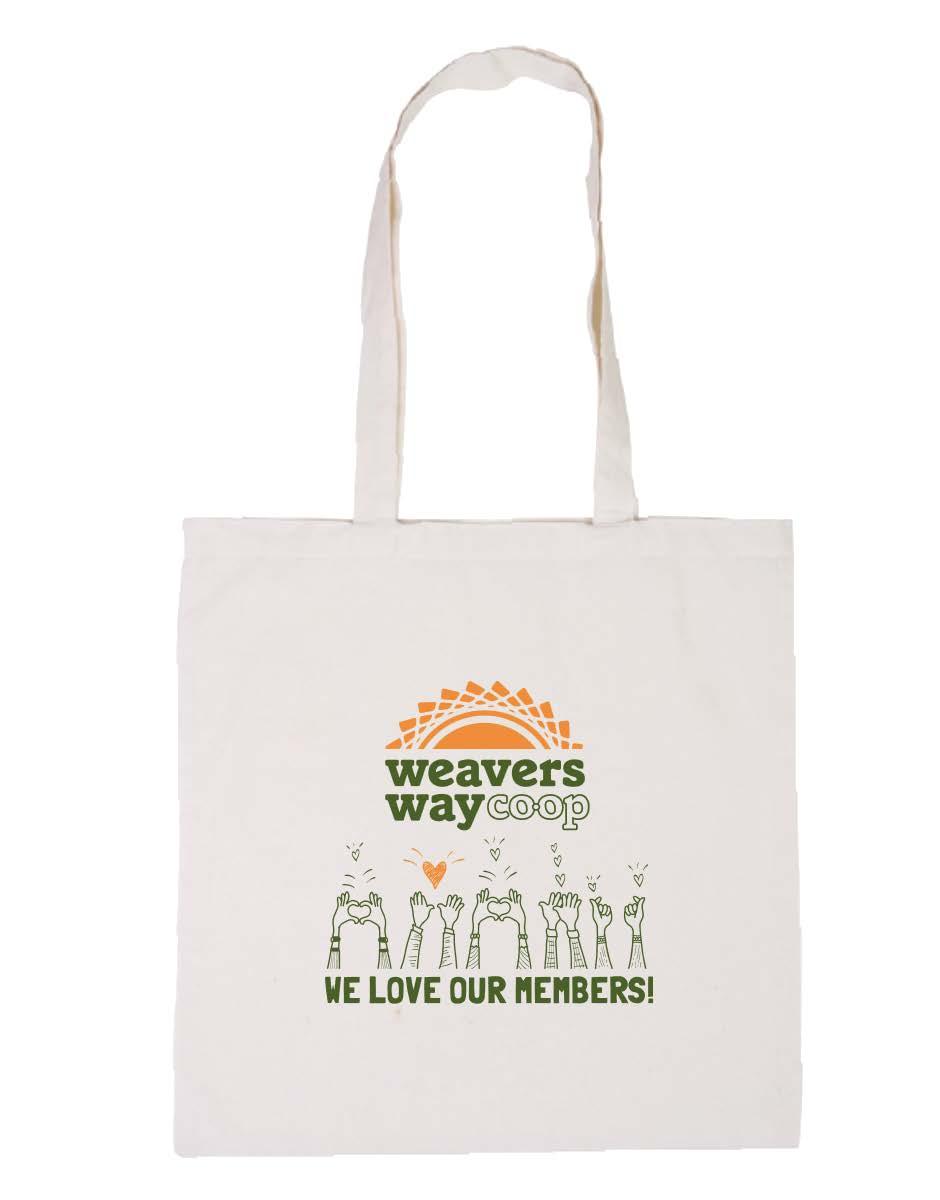
&

Sun, Oct 8 to Sun, Oct 22
Members get an extra 5% off!
Pick a shop at any Weavers Way location including the Mercantile, The Farm Market, Across the Way and Next Door during the 2-week period and get an EXTRA 5% OFF (on top of your other member discounts)
!







 by Karen Plourde, Editor, Weavers Way Shuttle
by Karen Plourde, Editor, Weavers Way Shuttle









 by Marie Clark, Food Moxie Board Member
by Marie Clark, Food Moxie Board Member





 by Nancy Peter, for the Shuttle
by Nancy Peter, for the Shuttle









































































